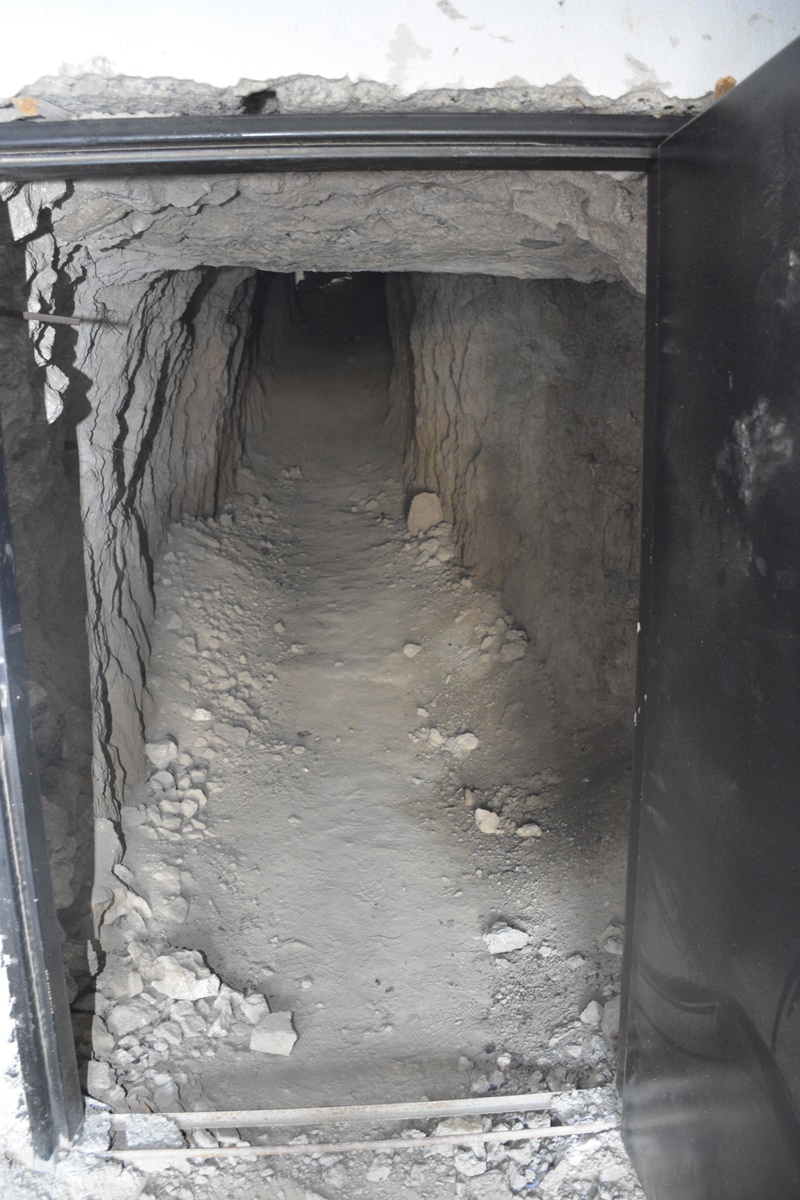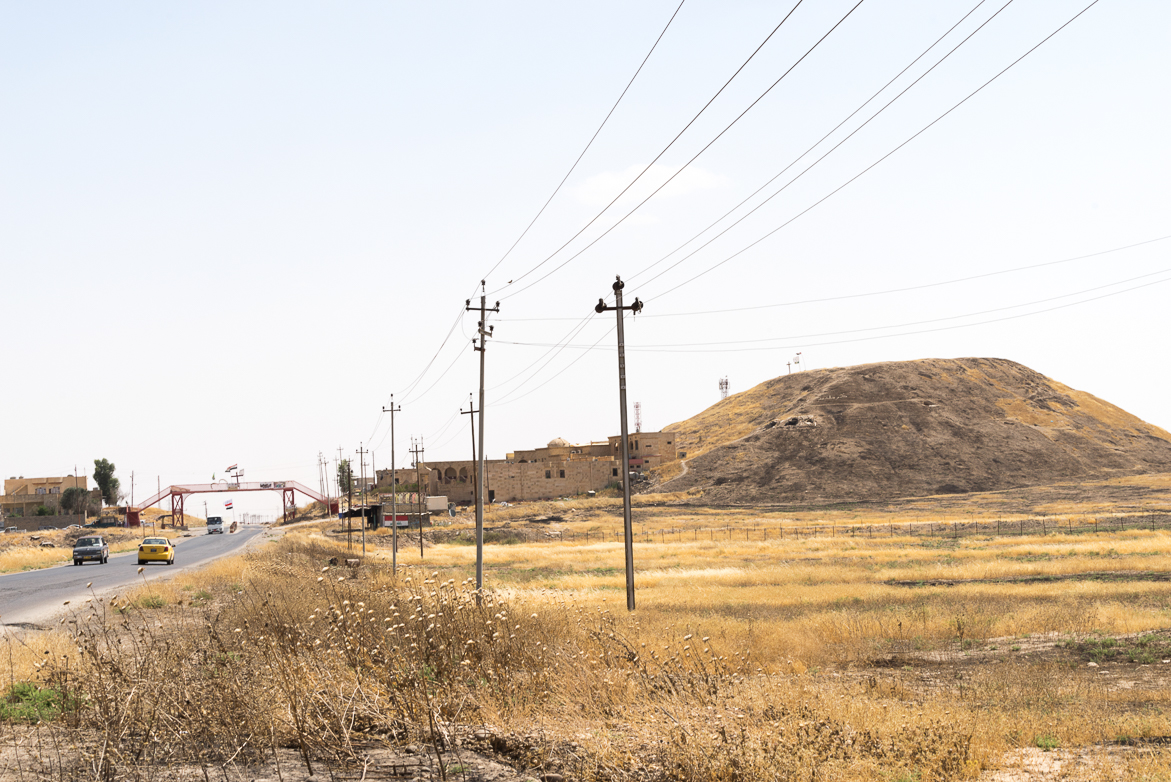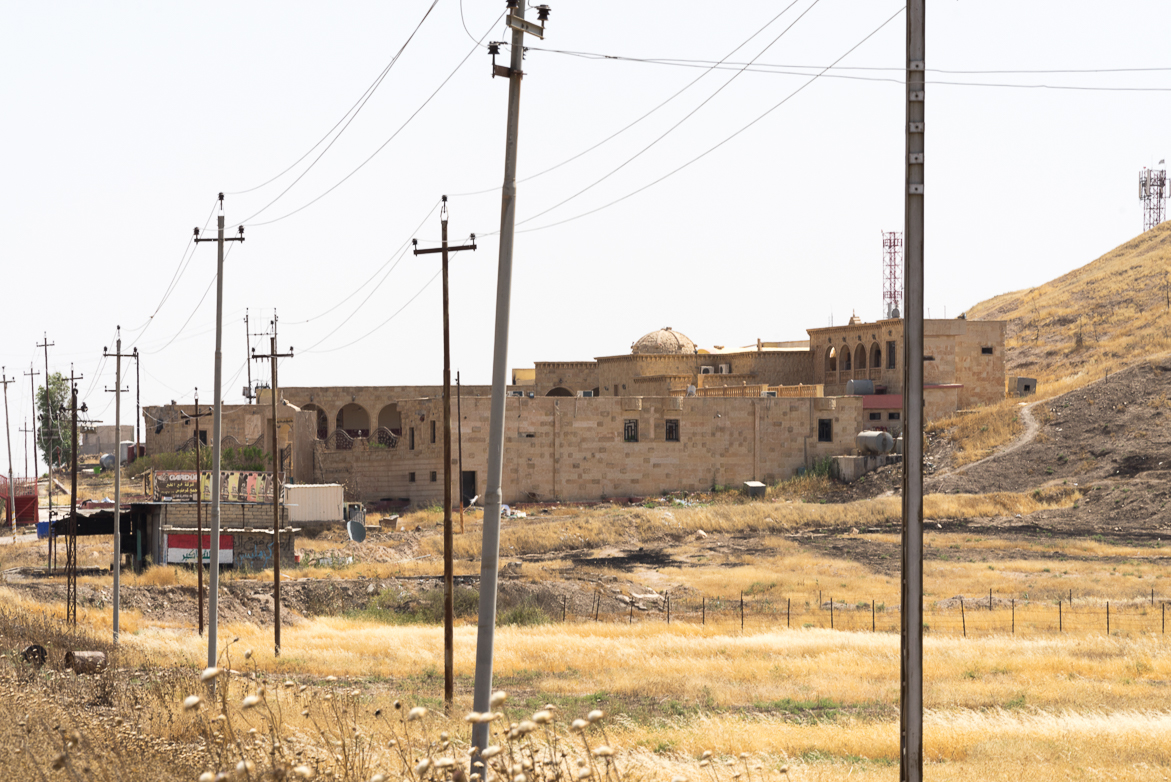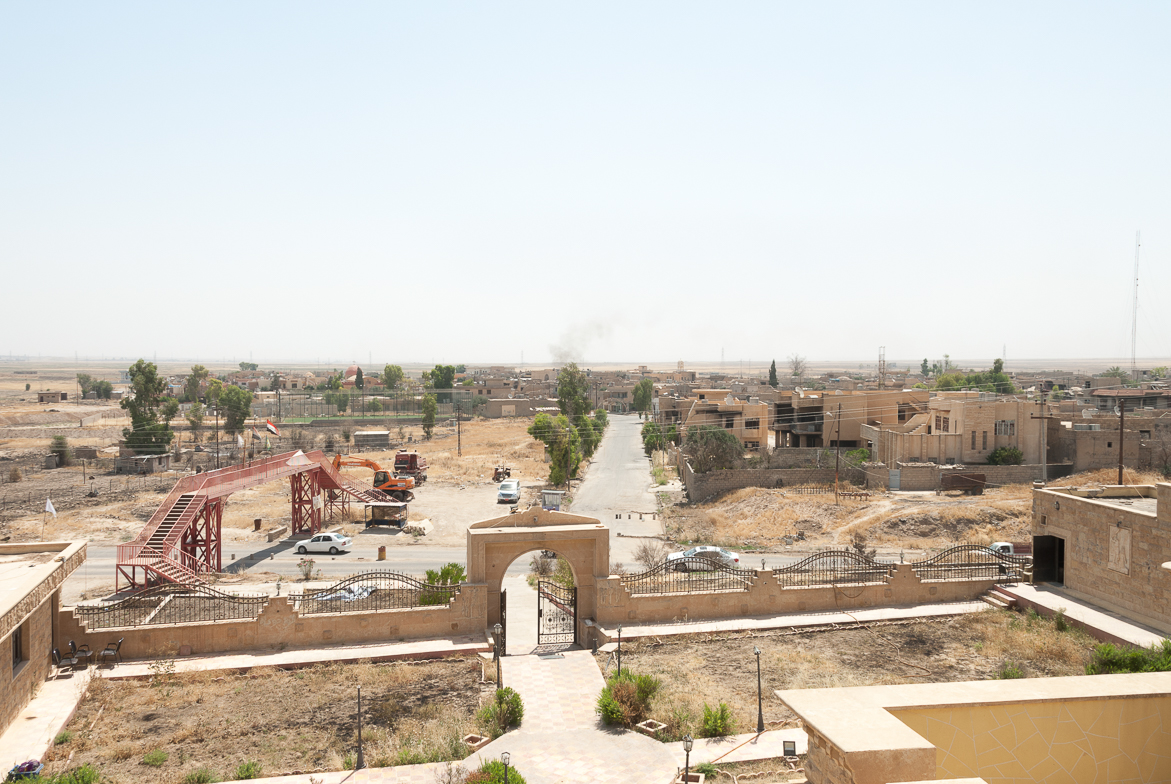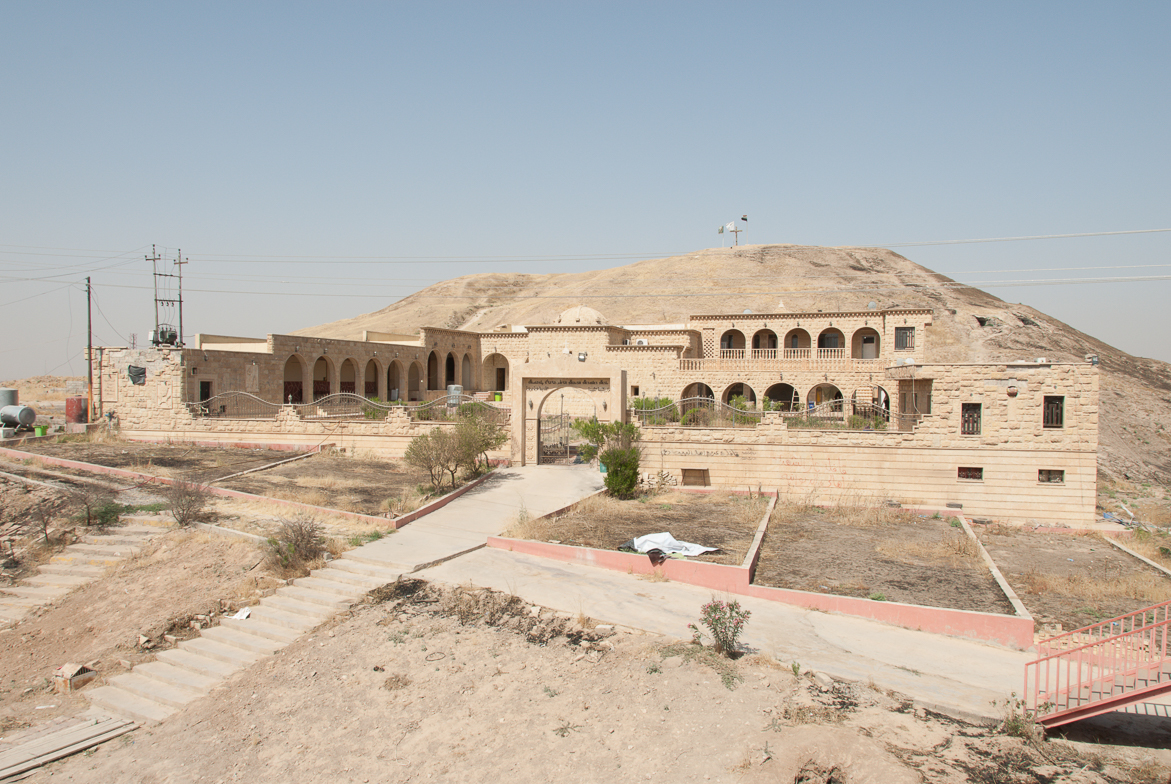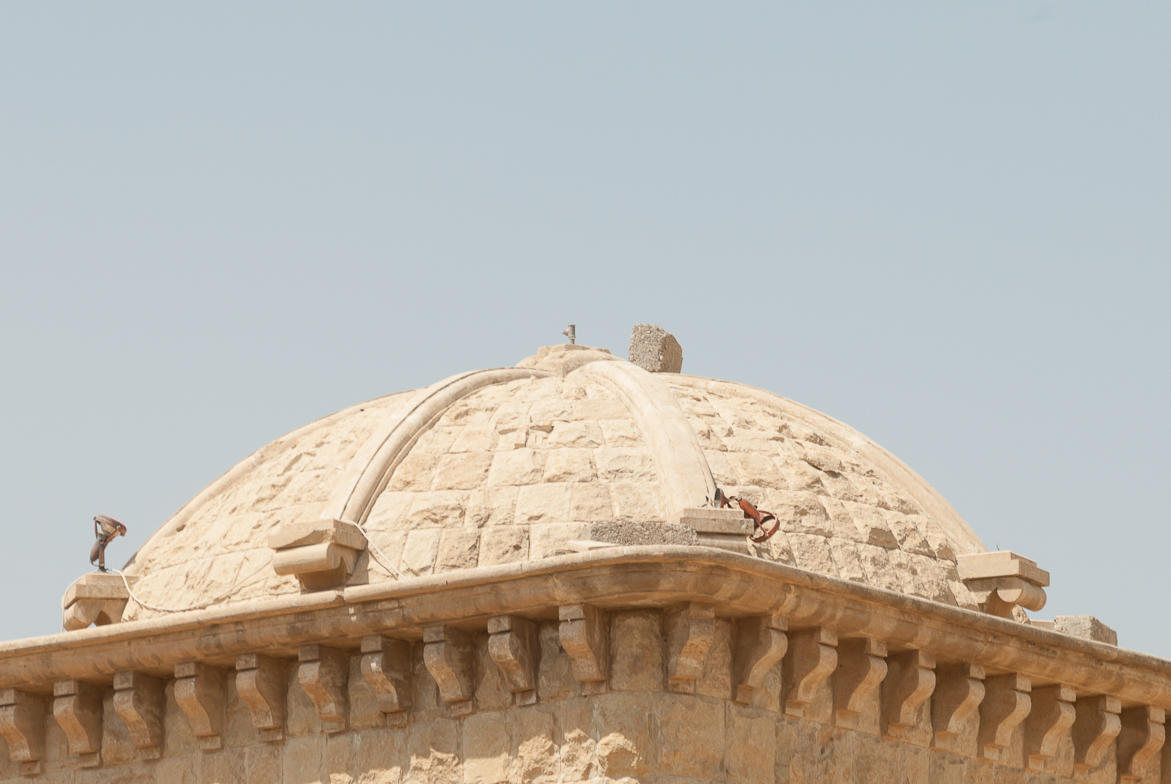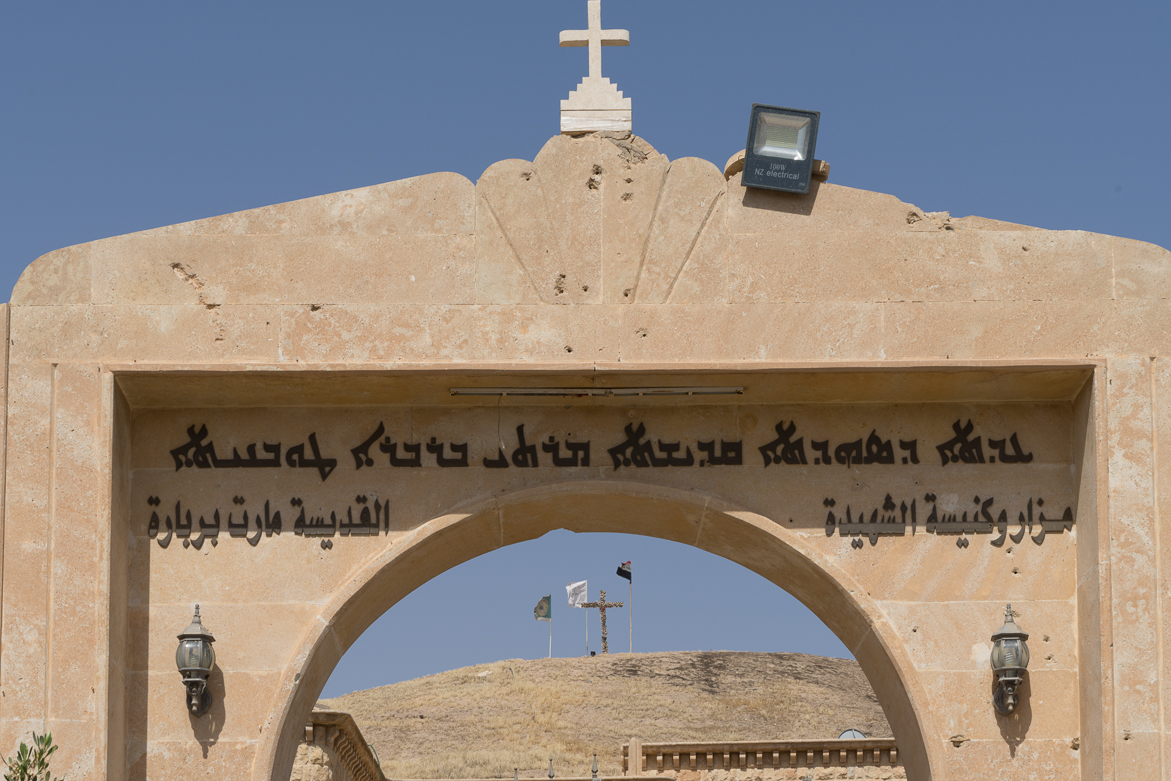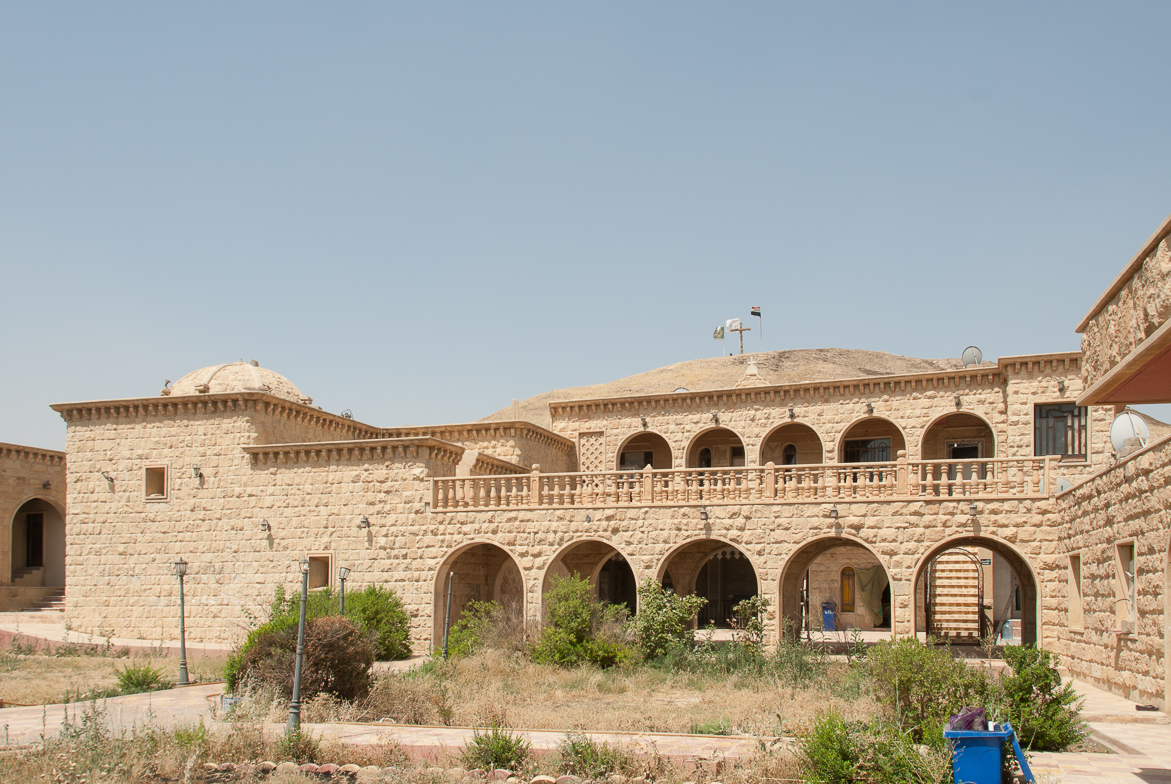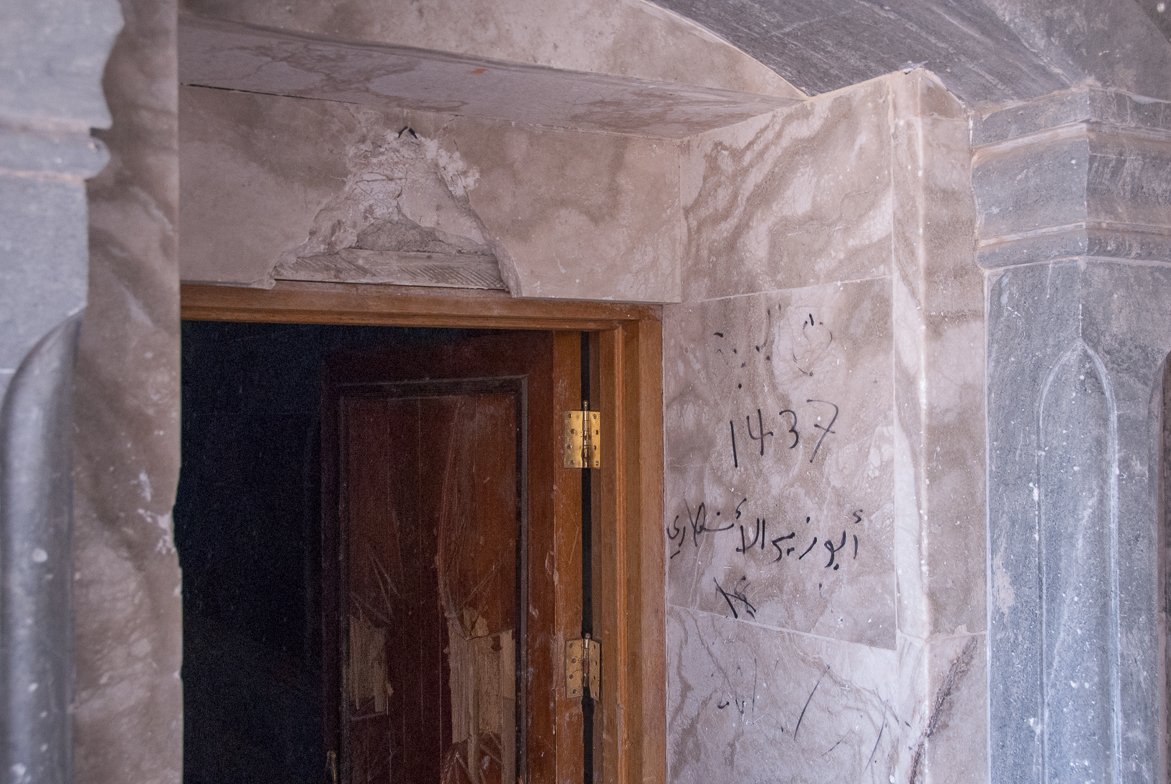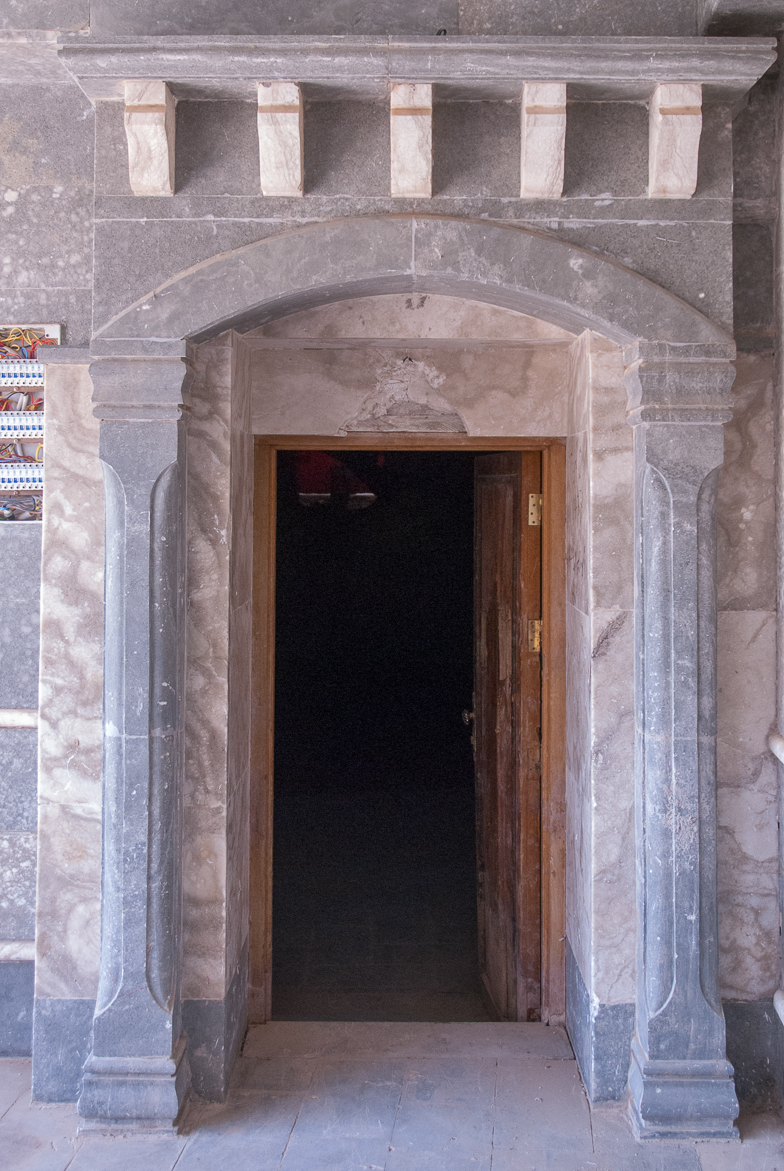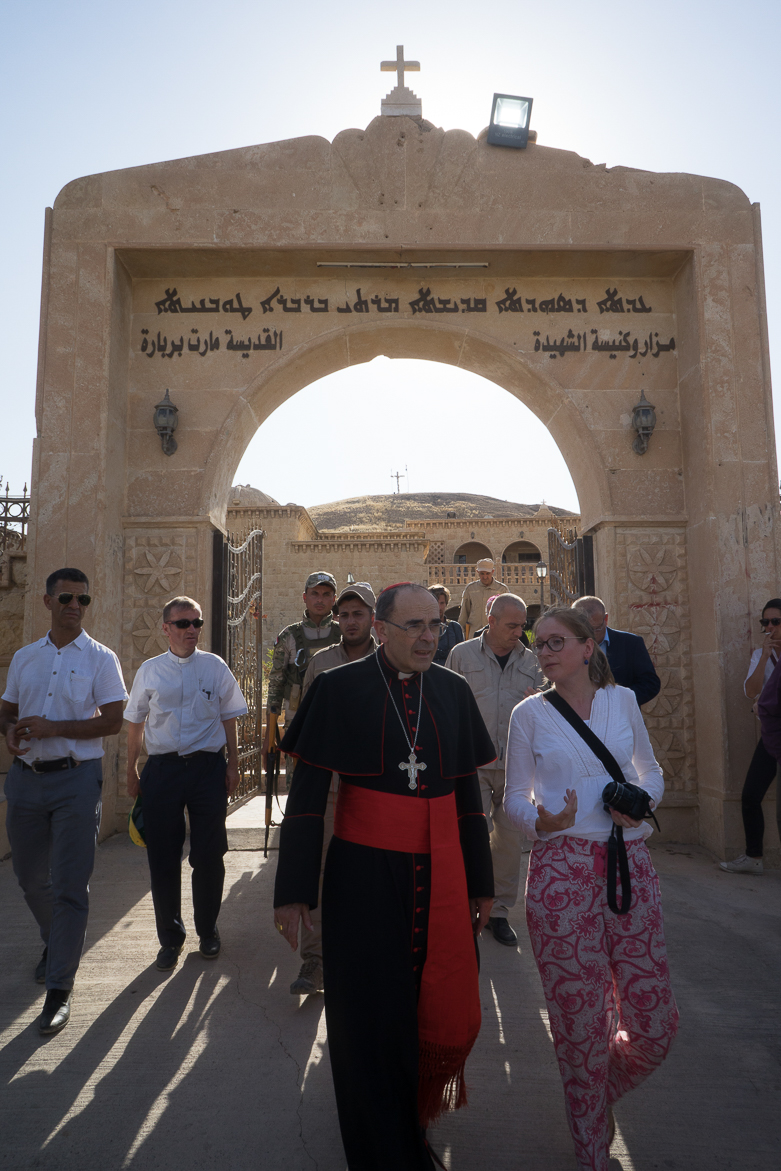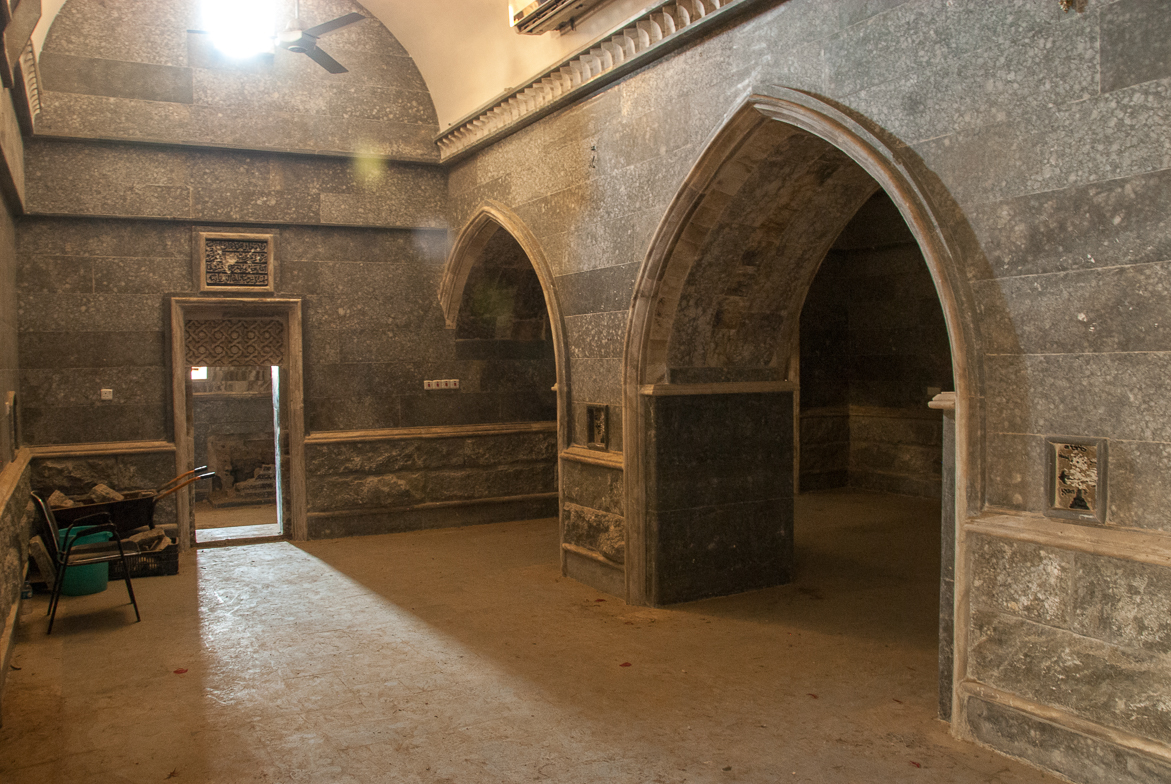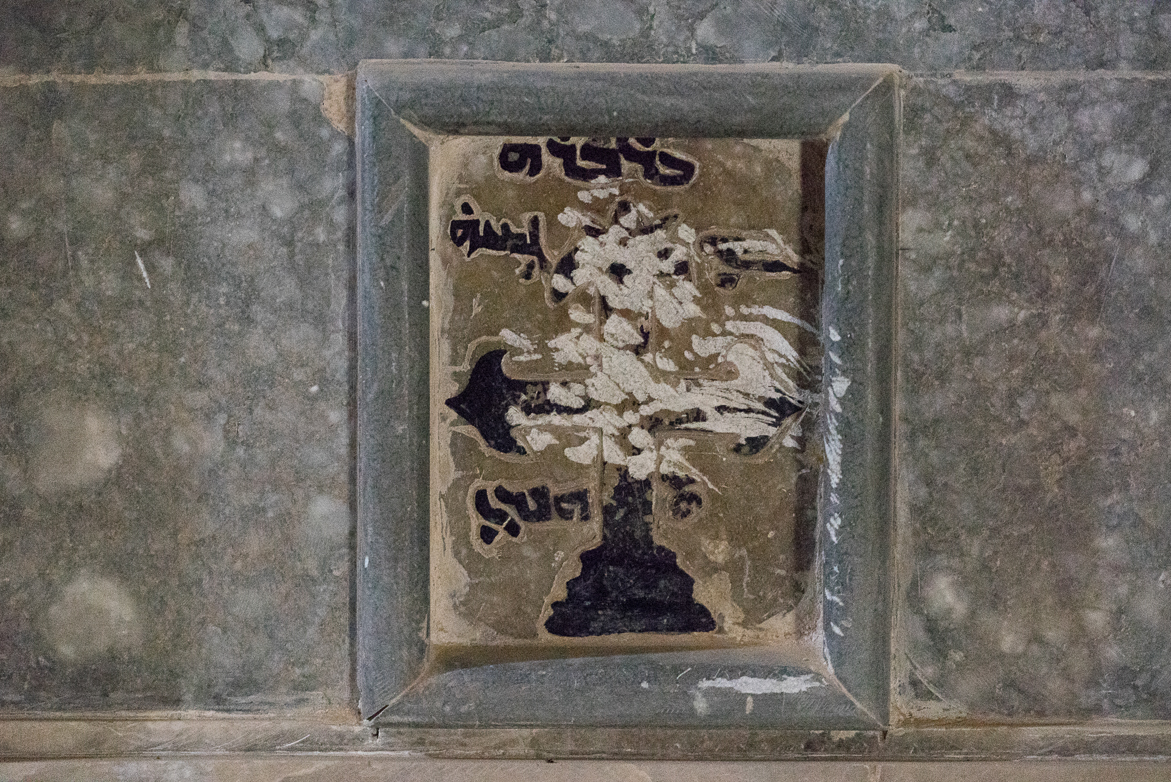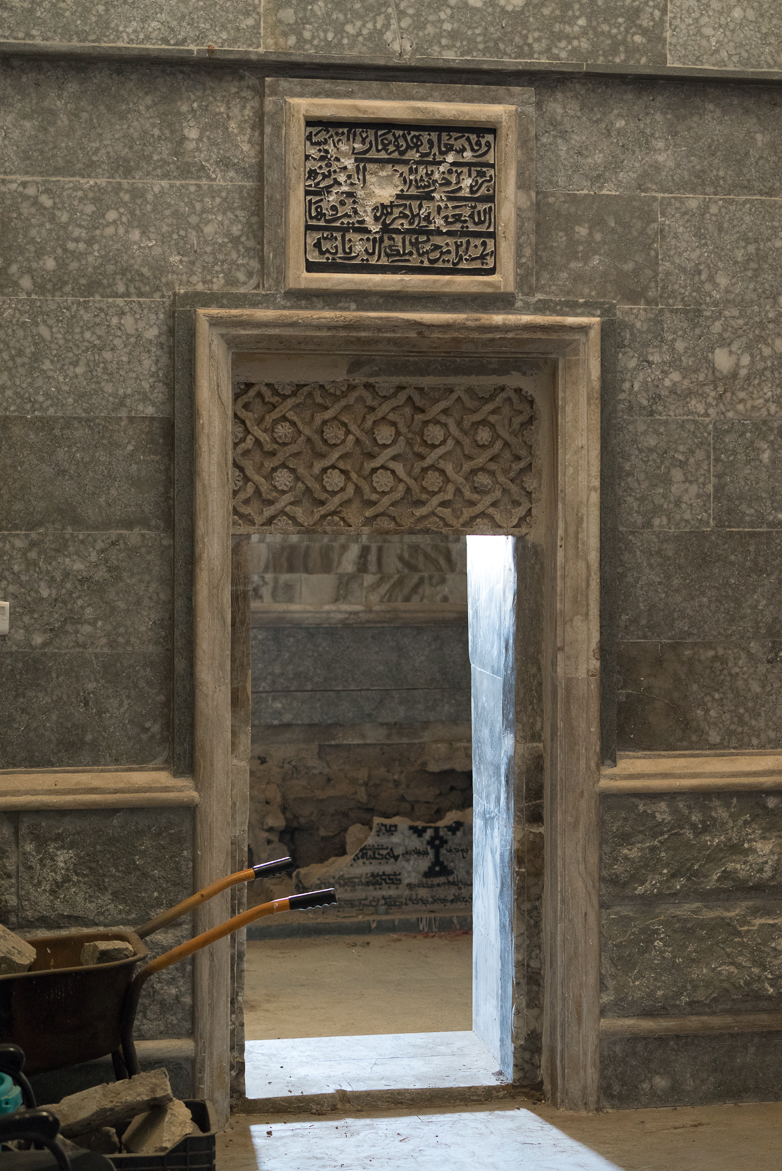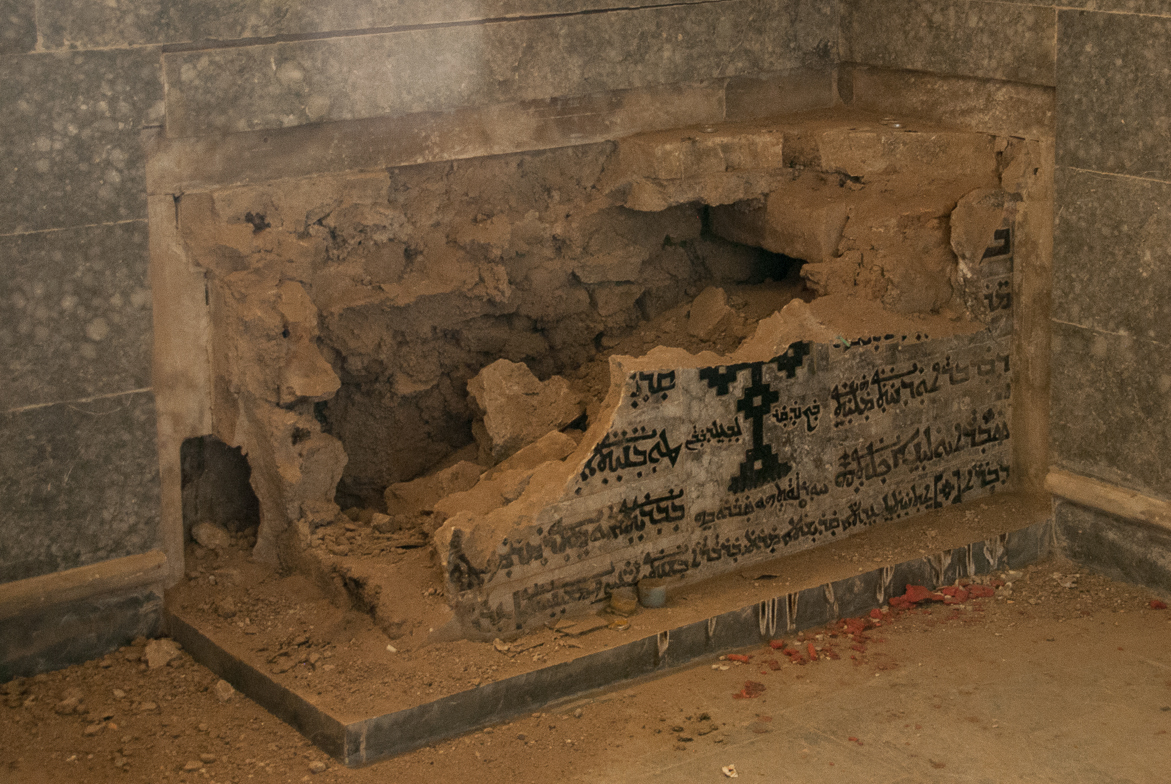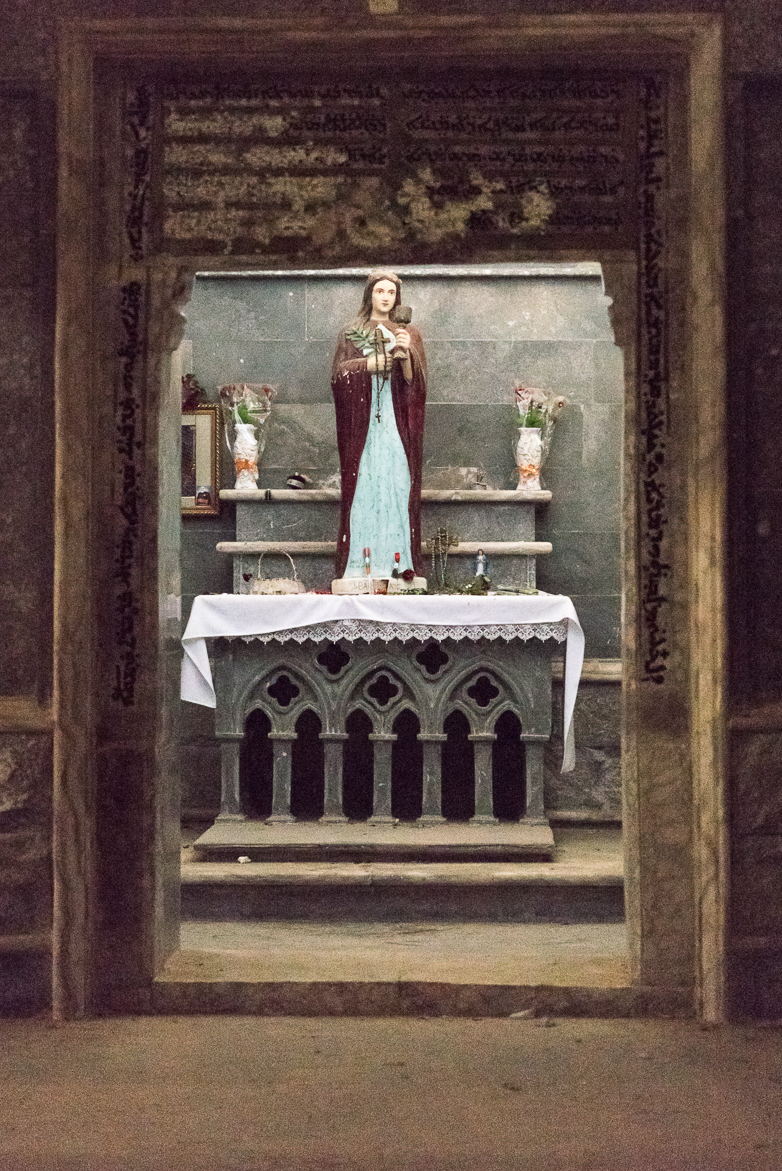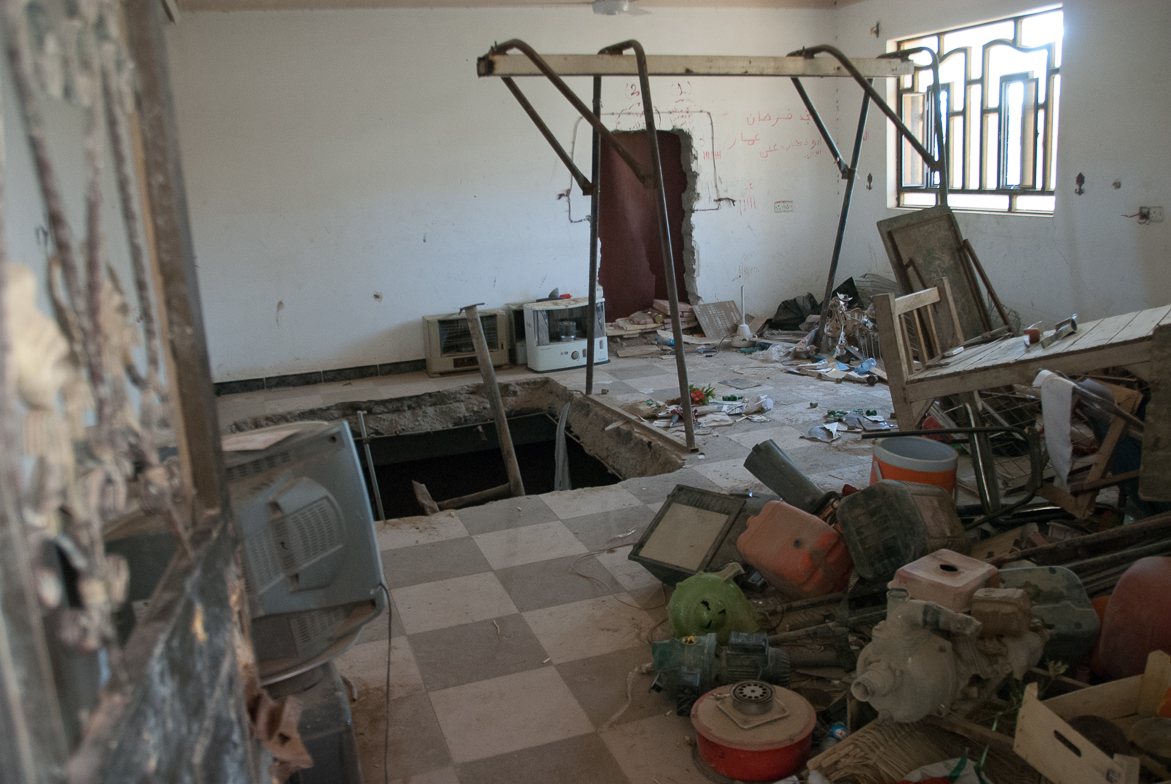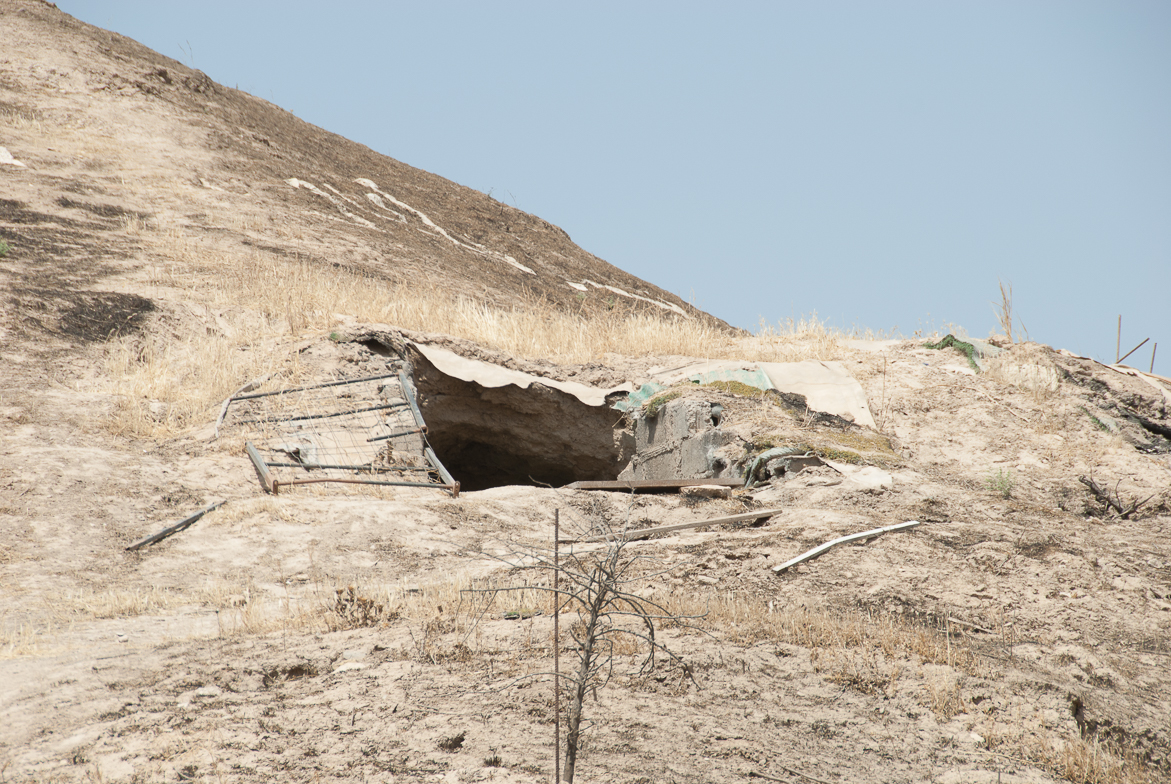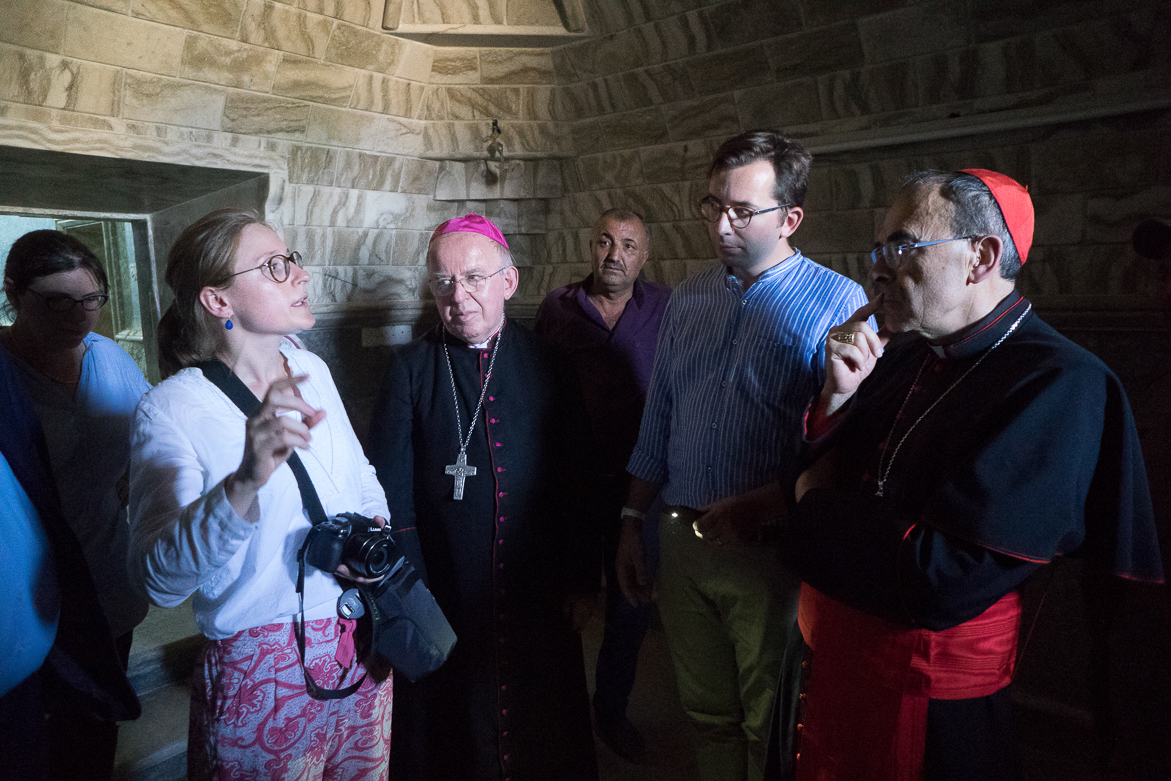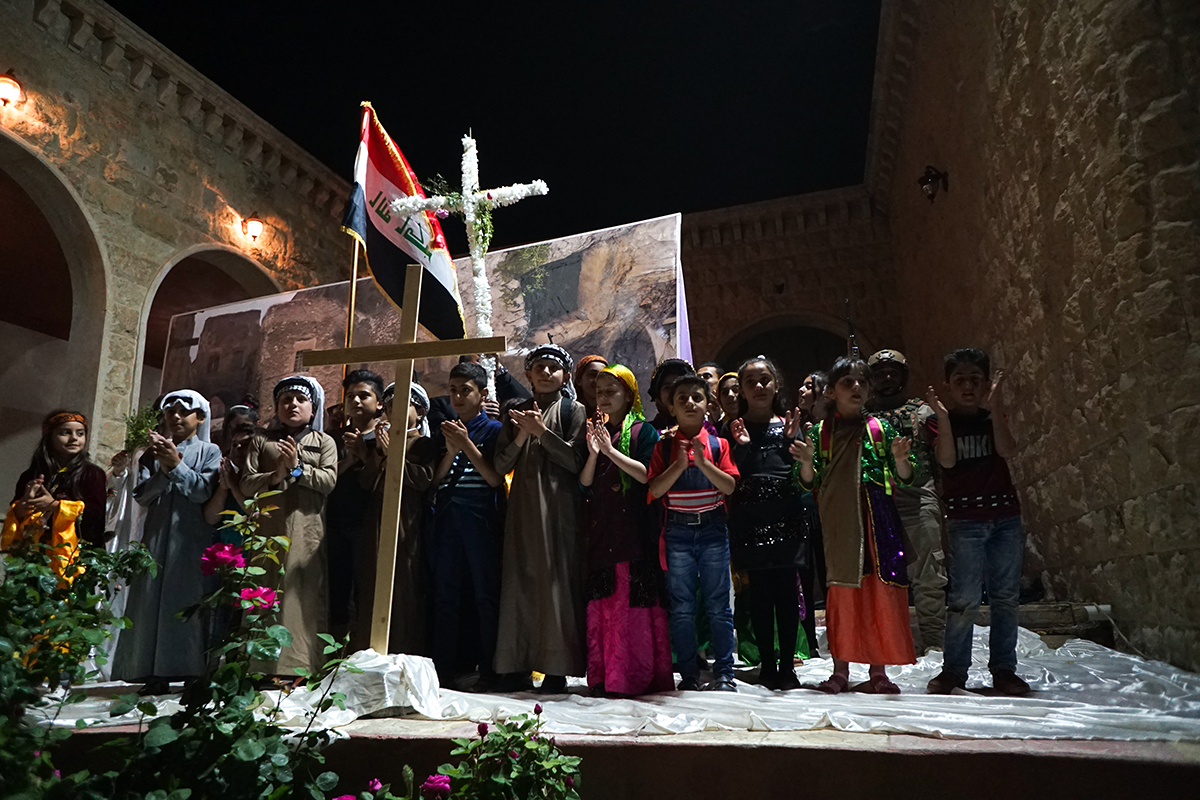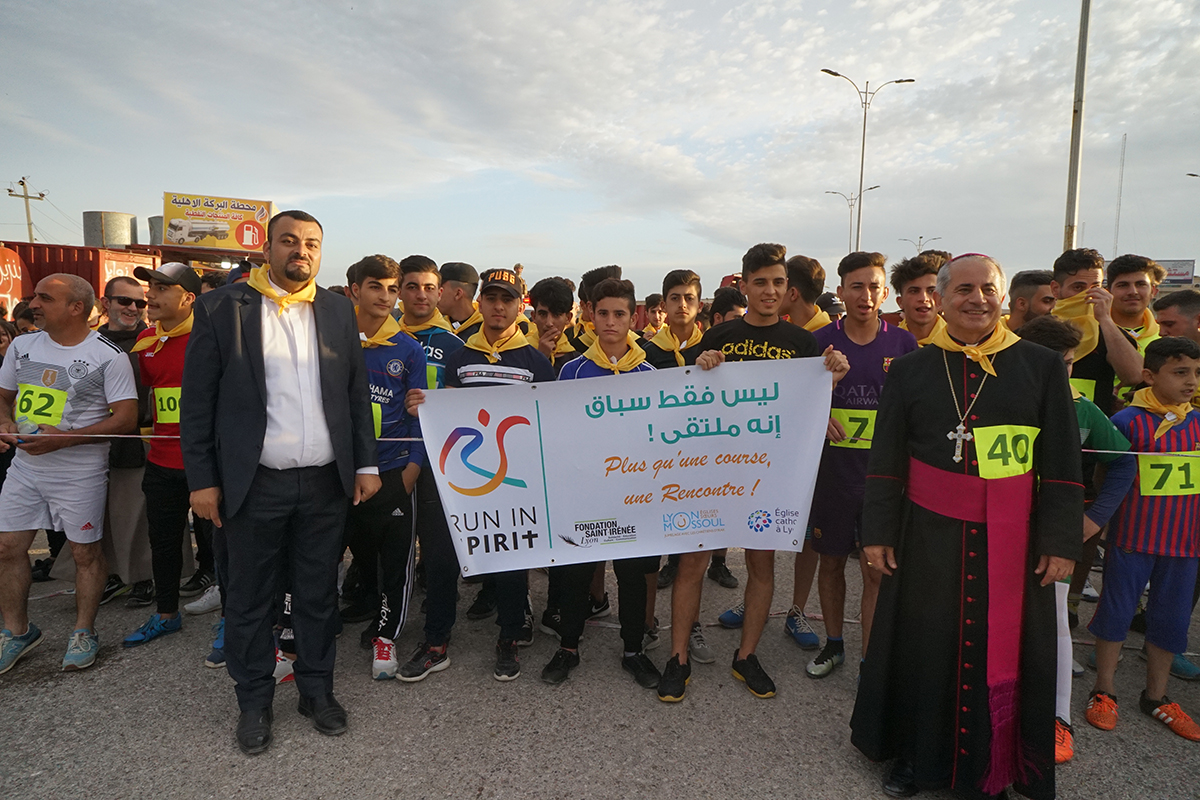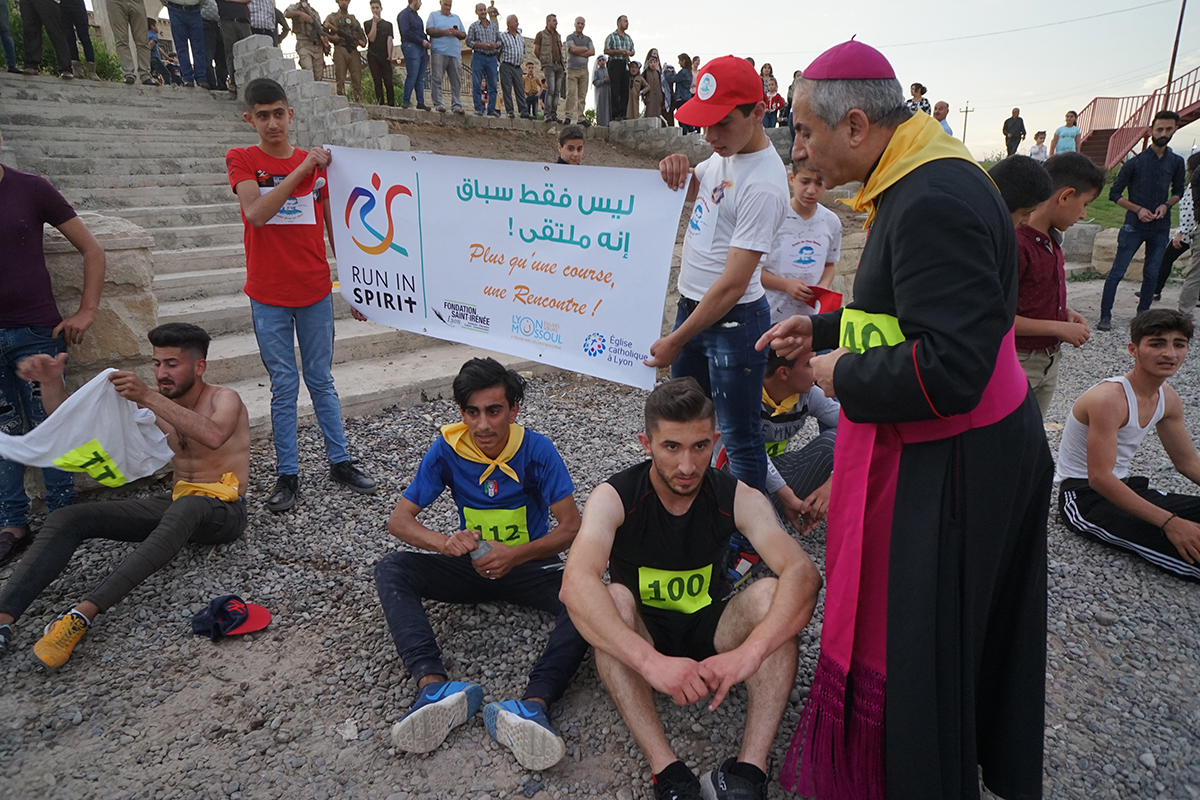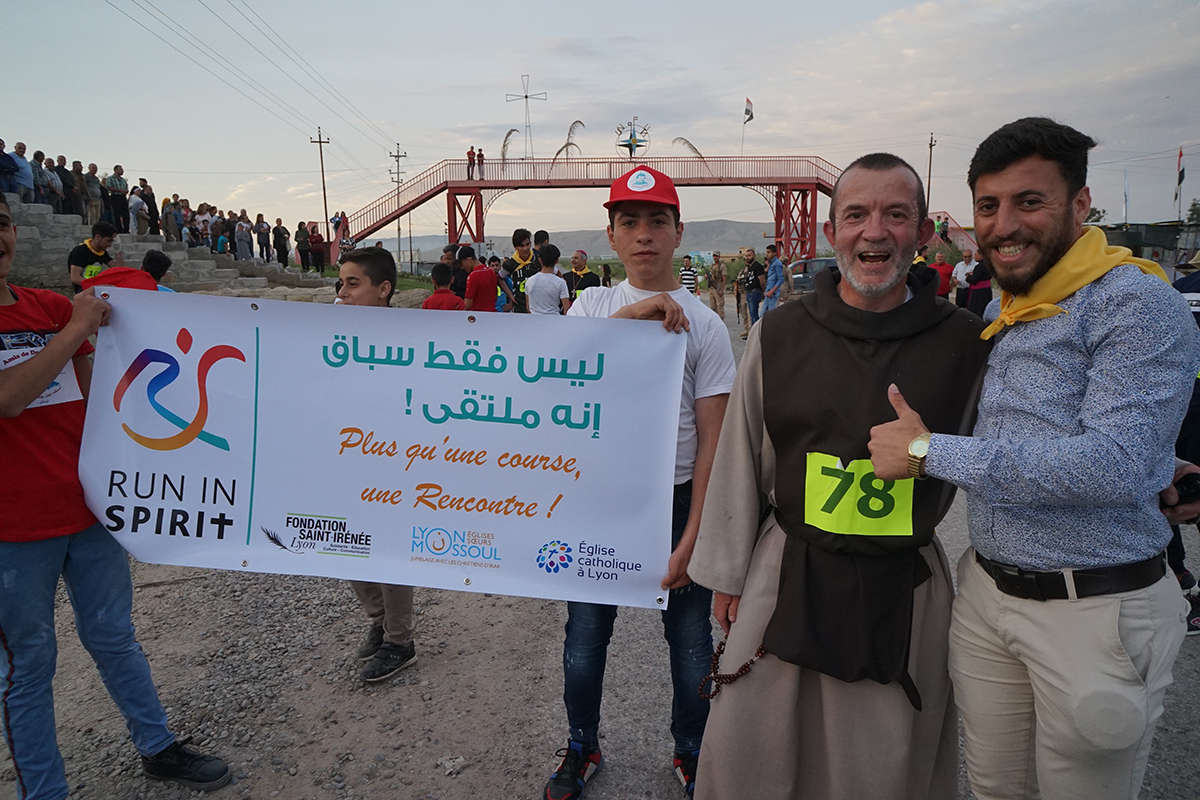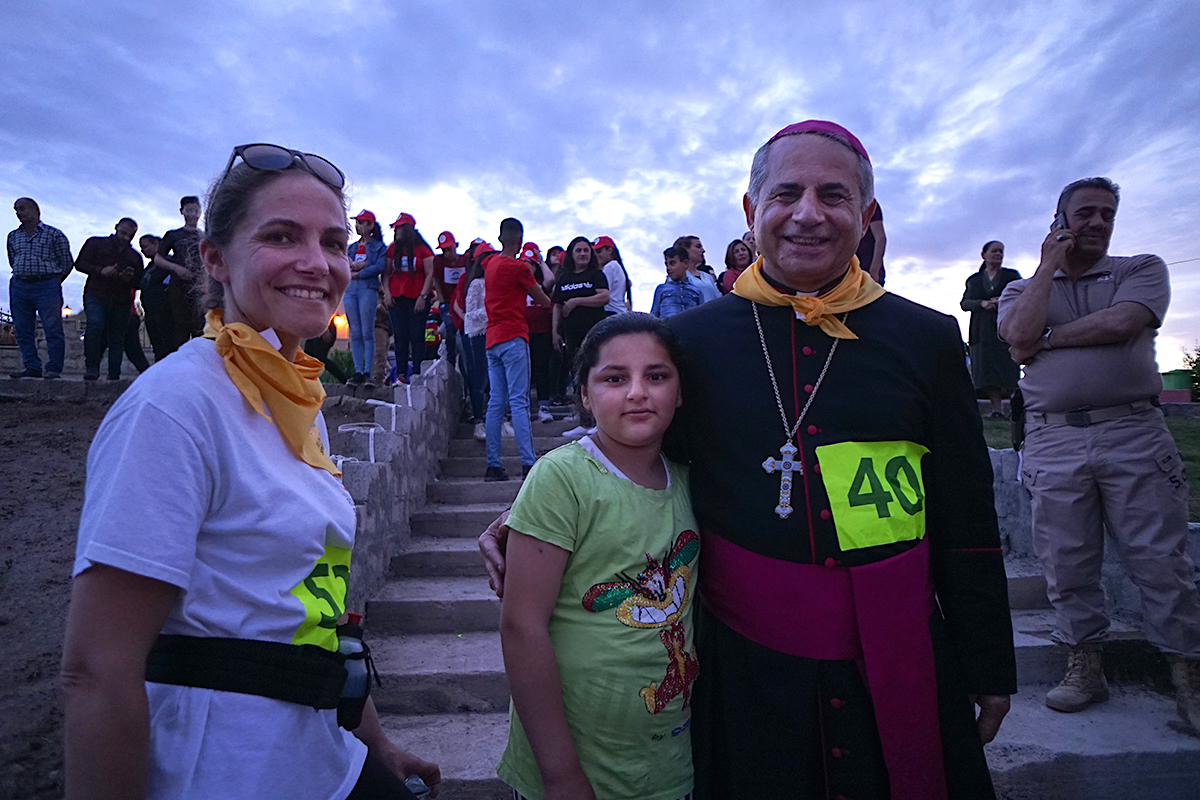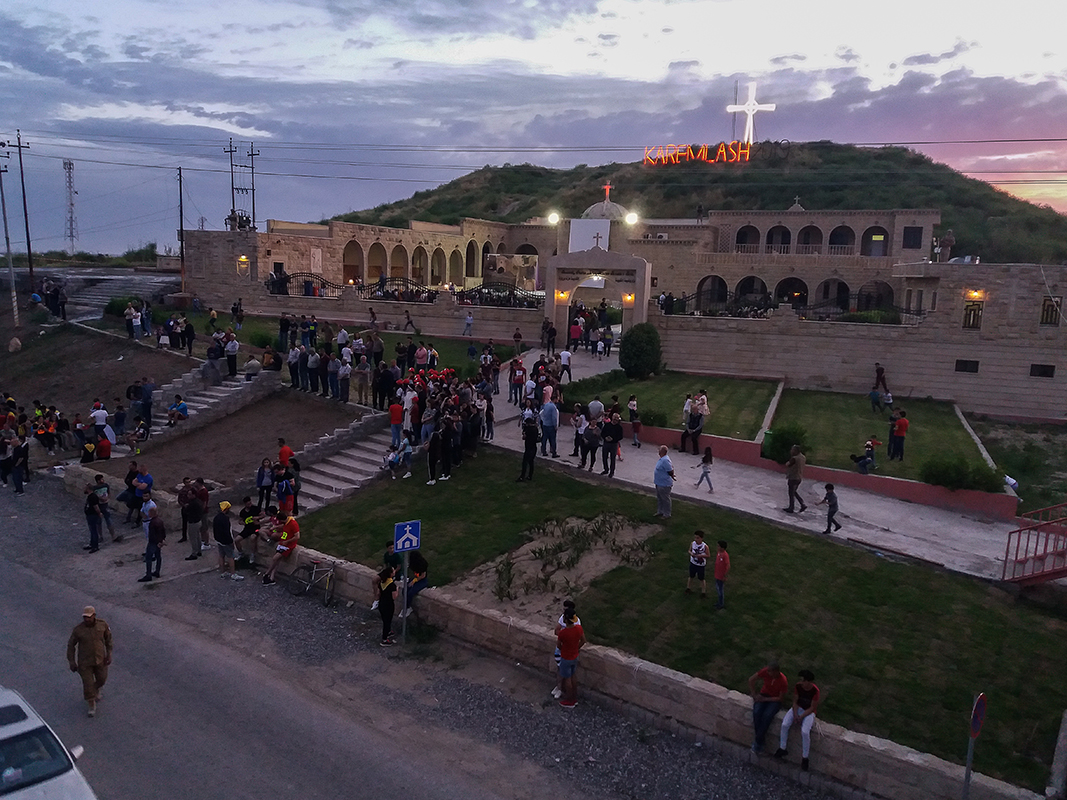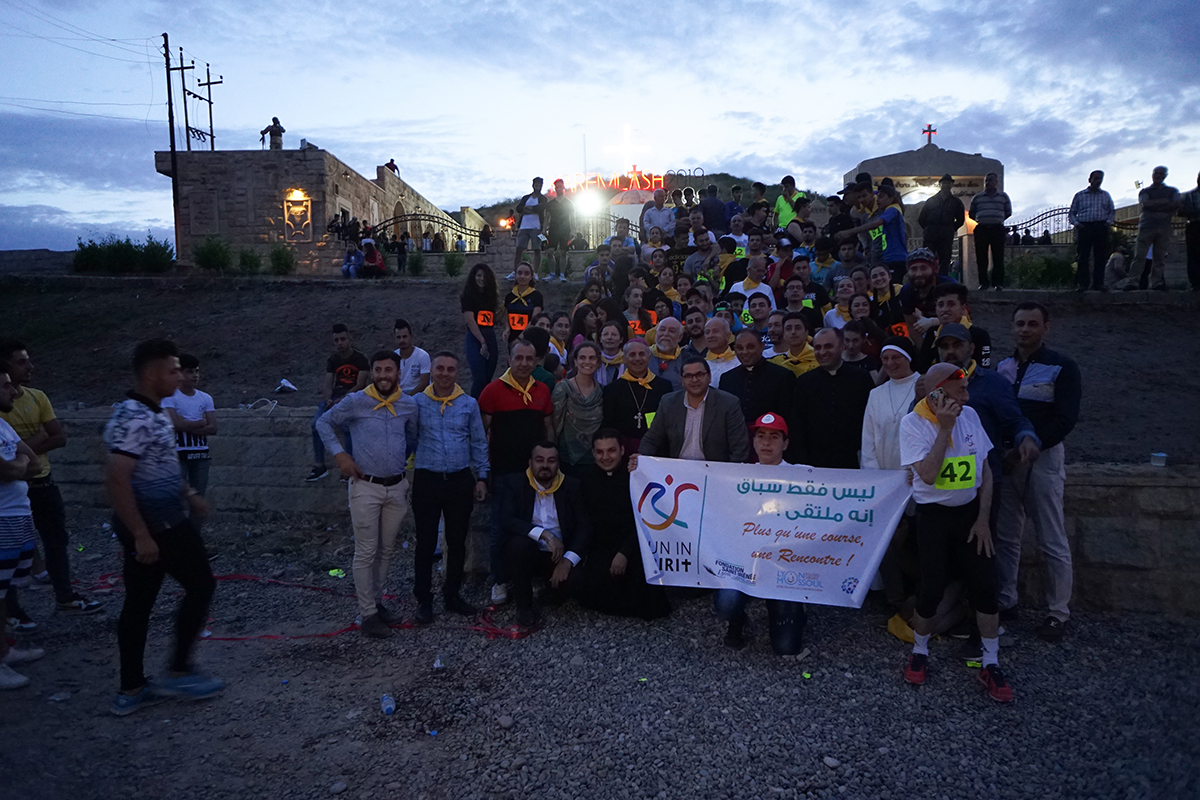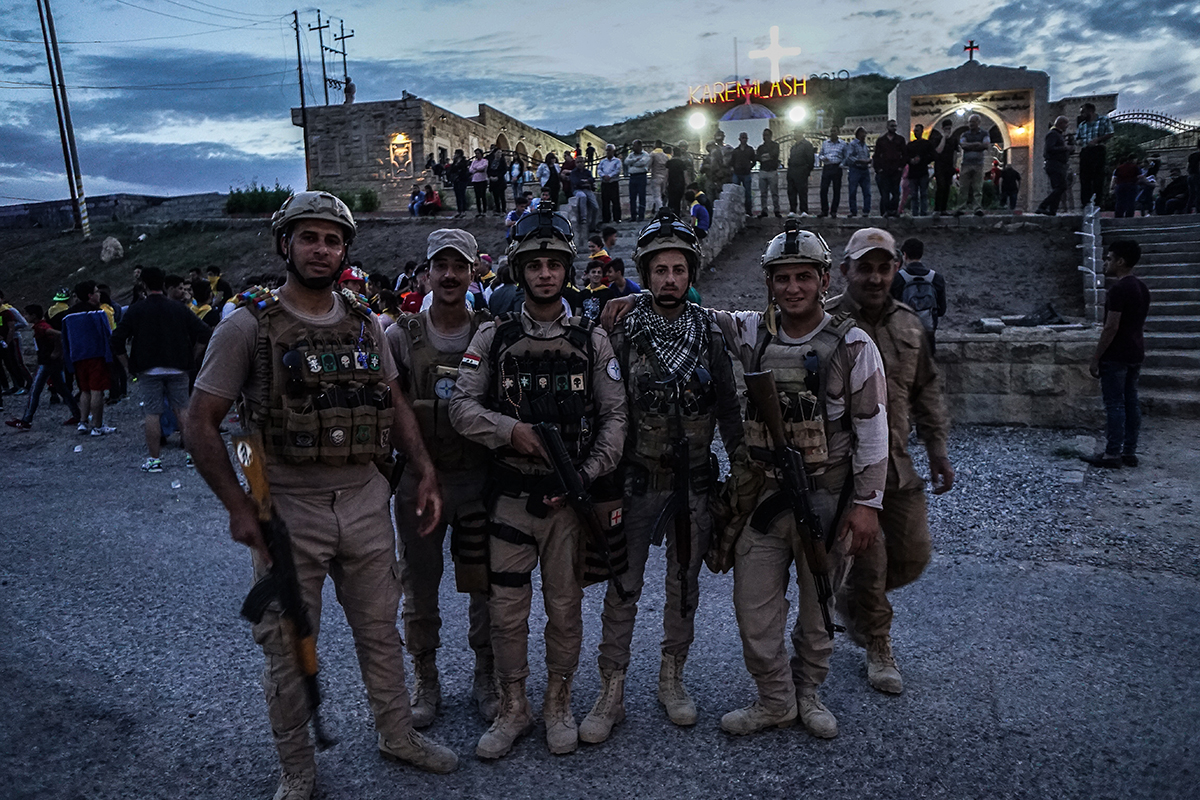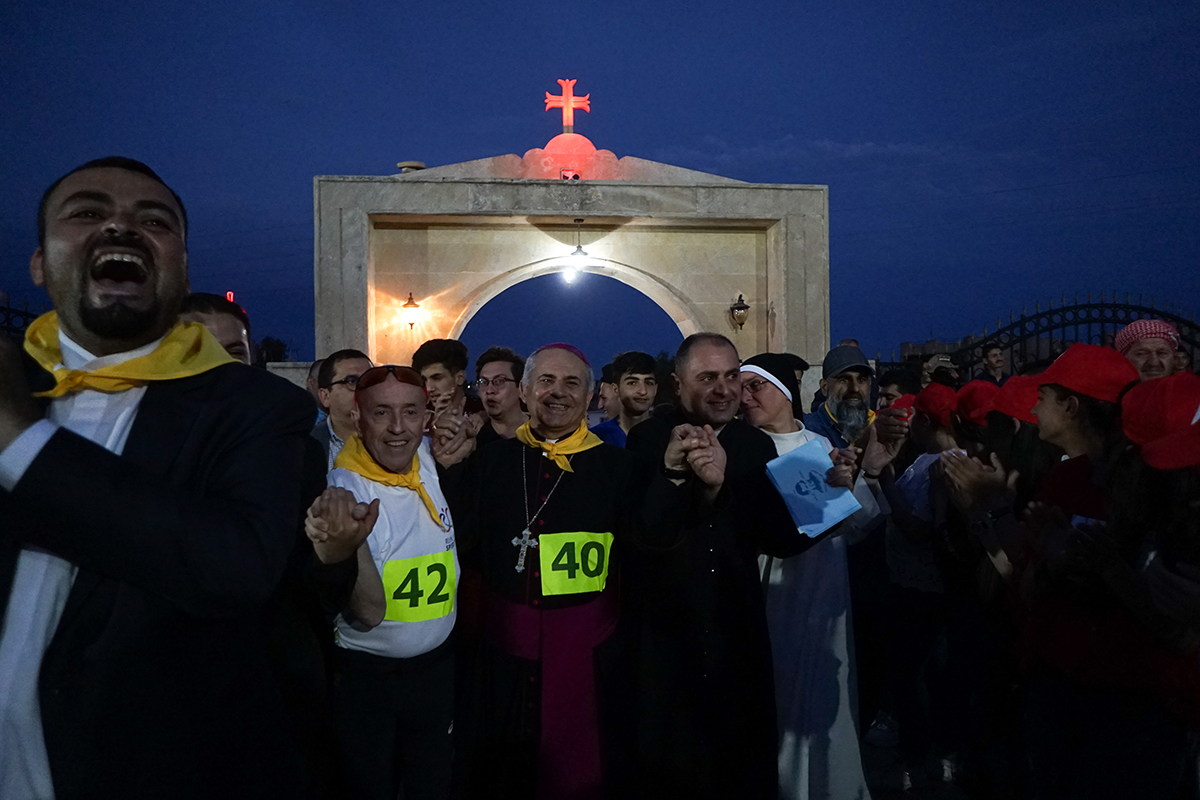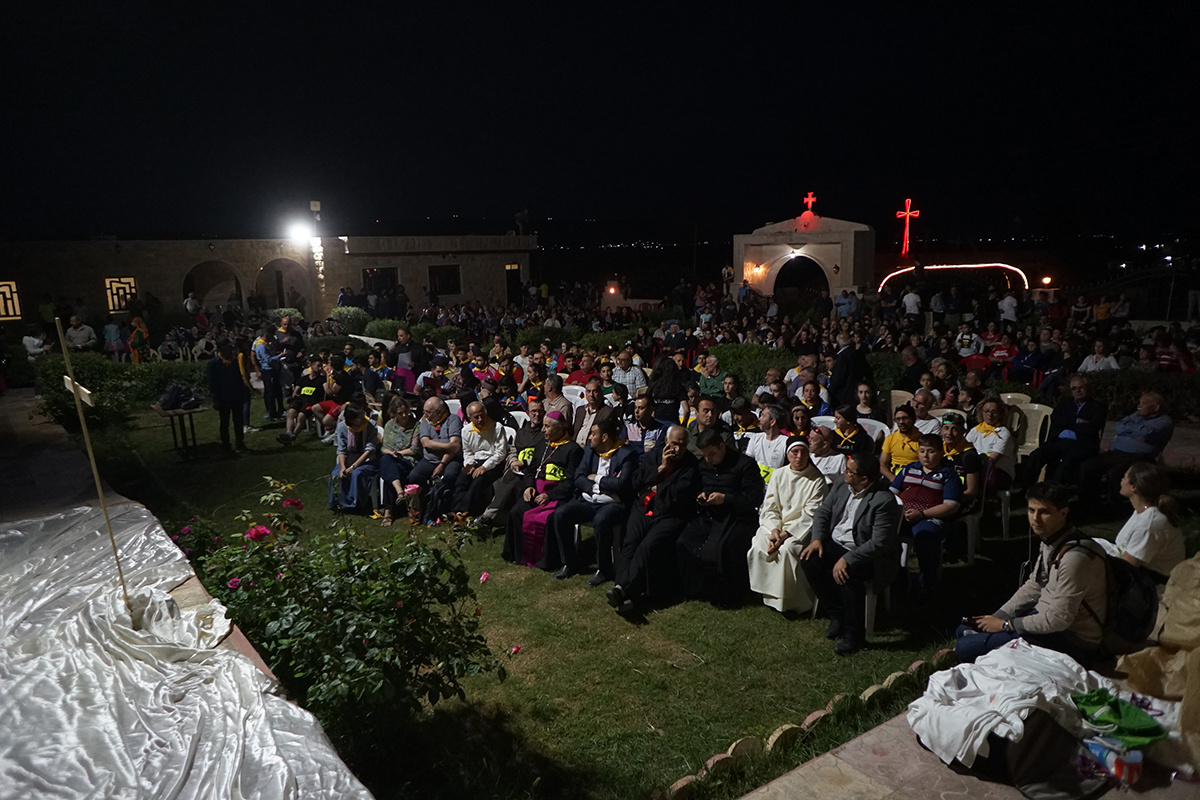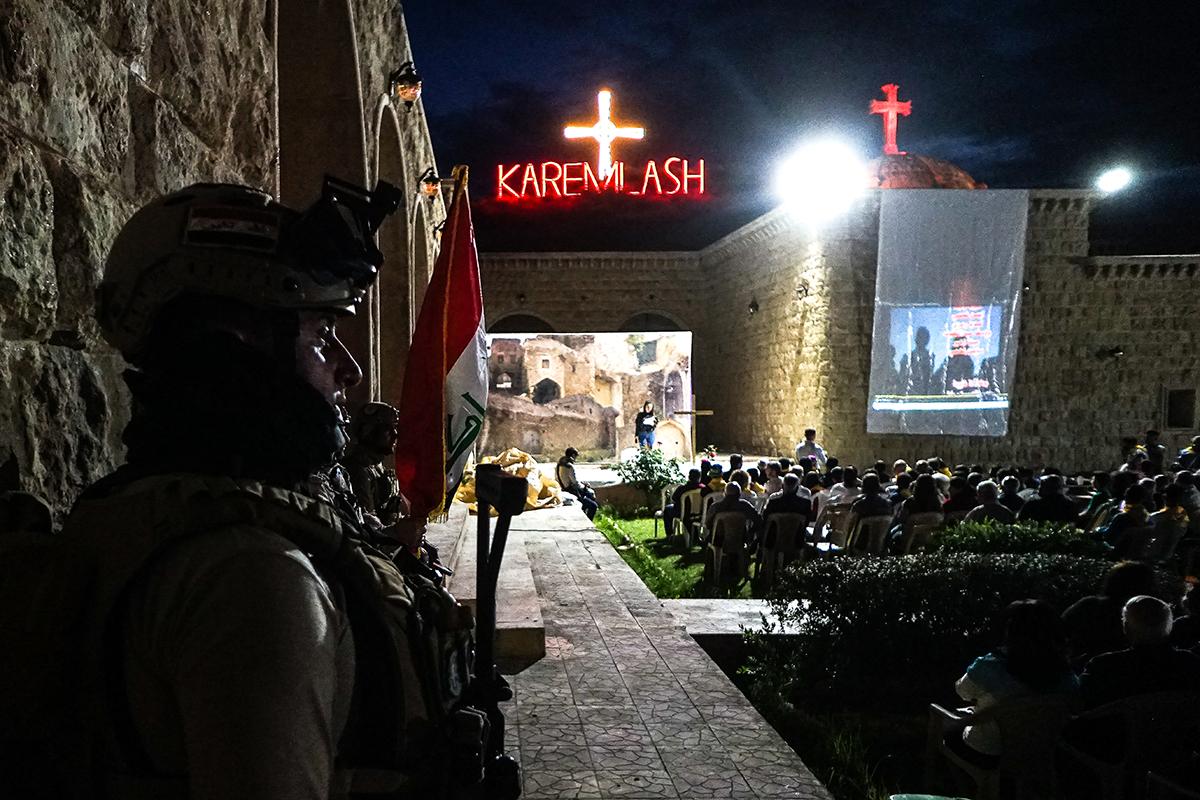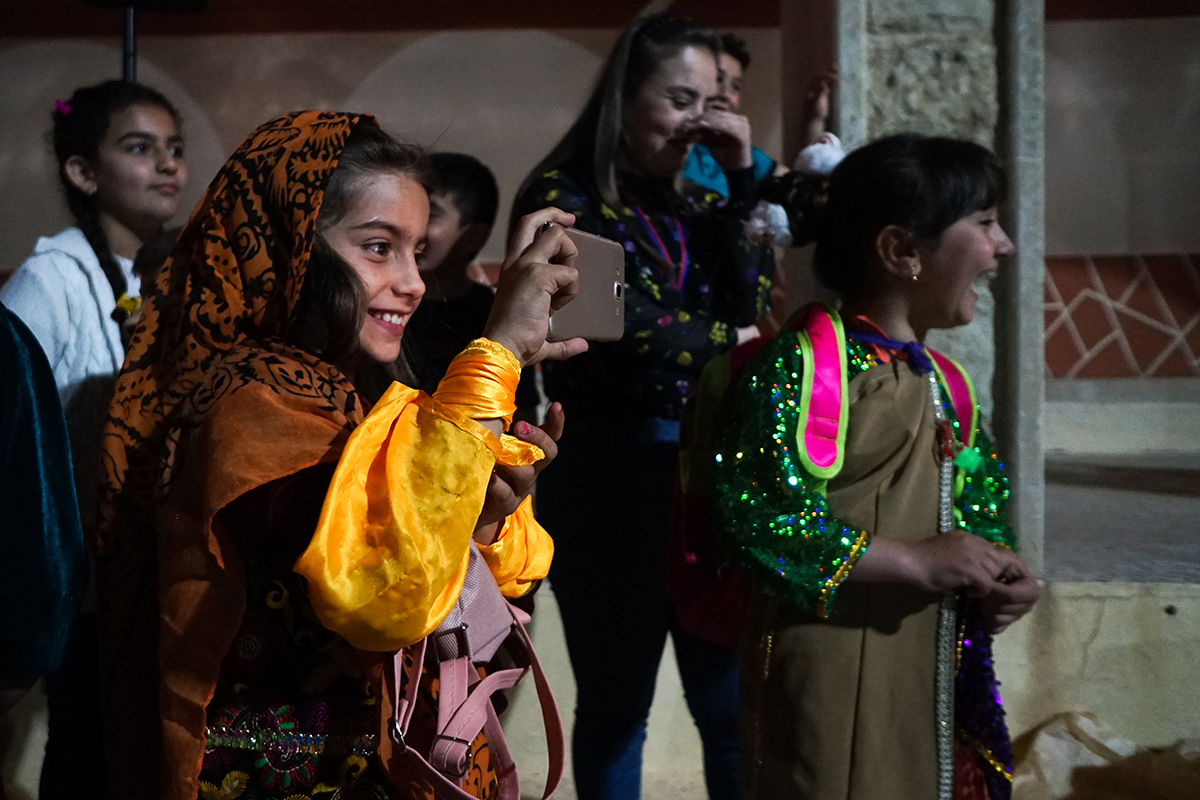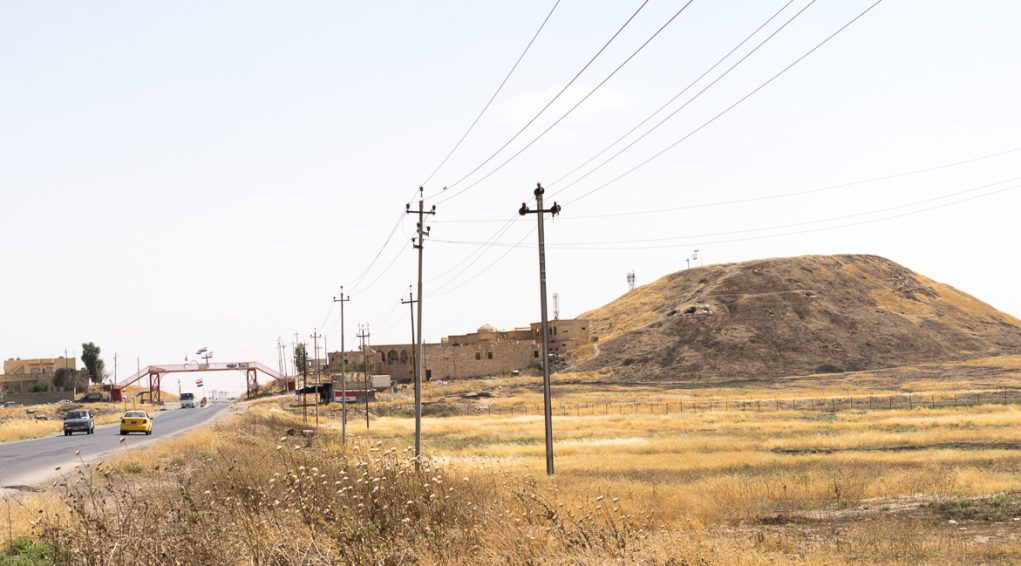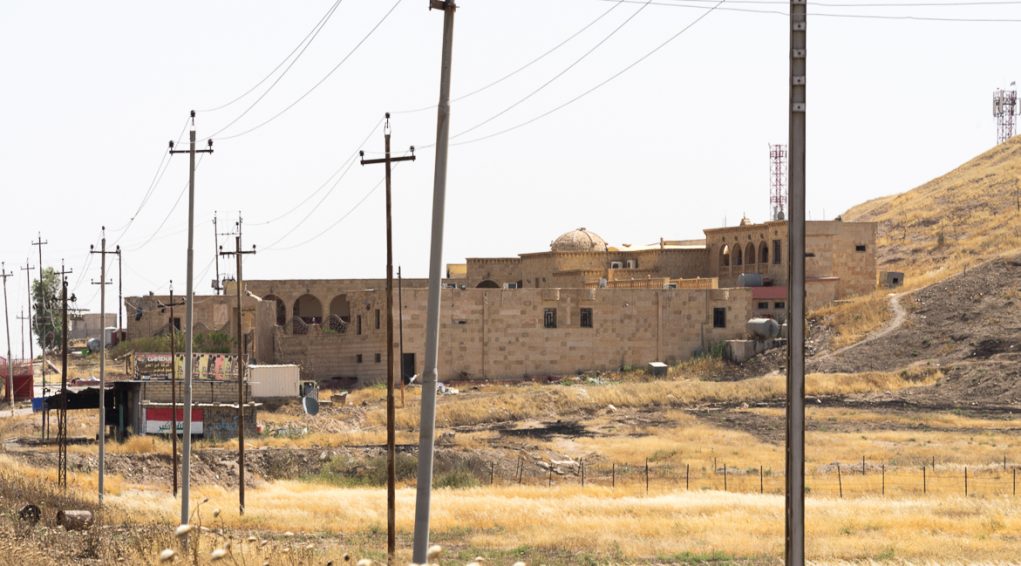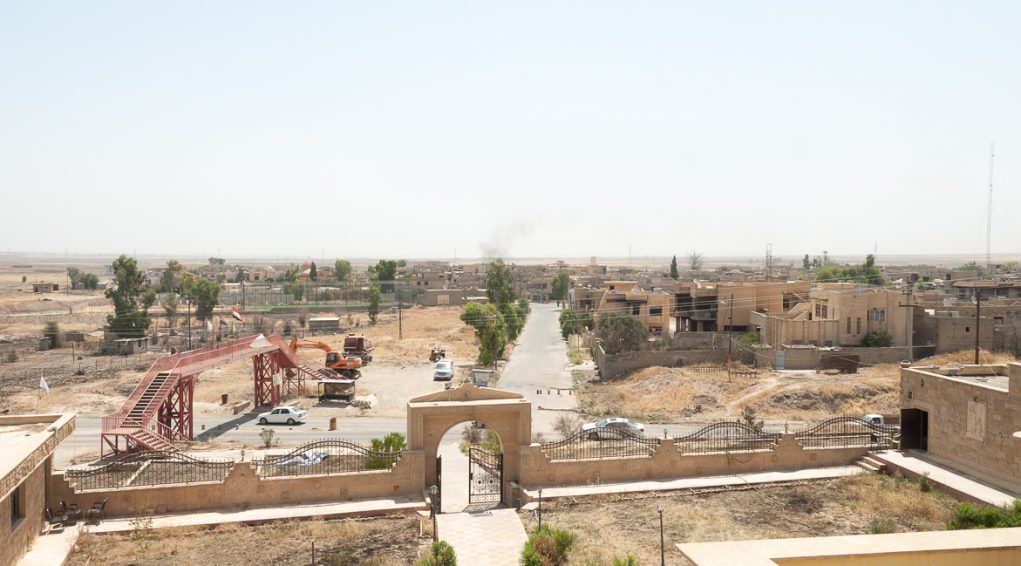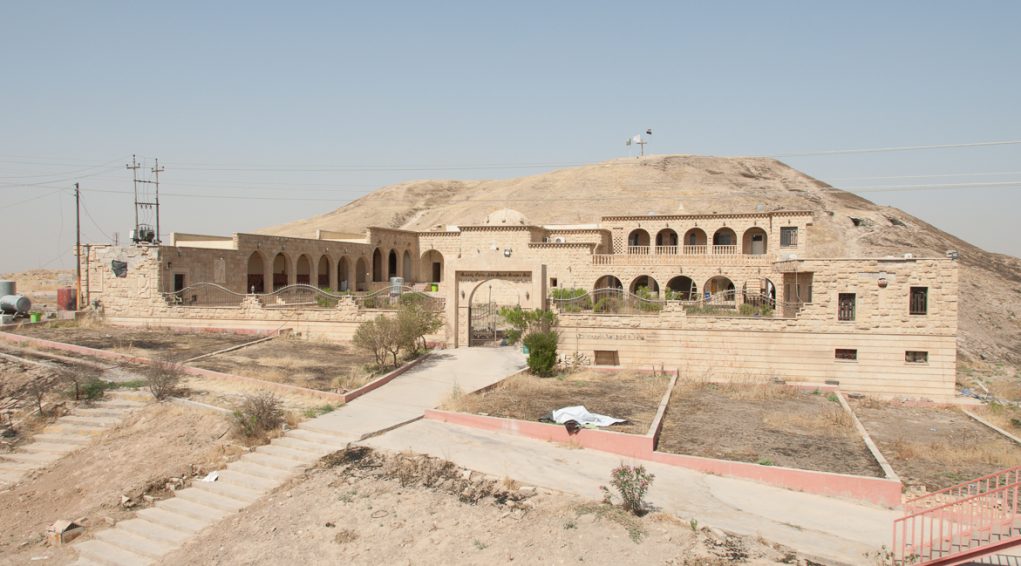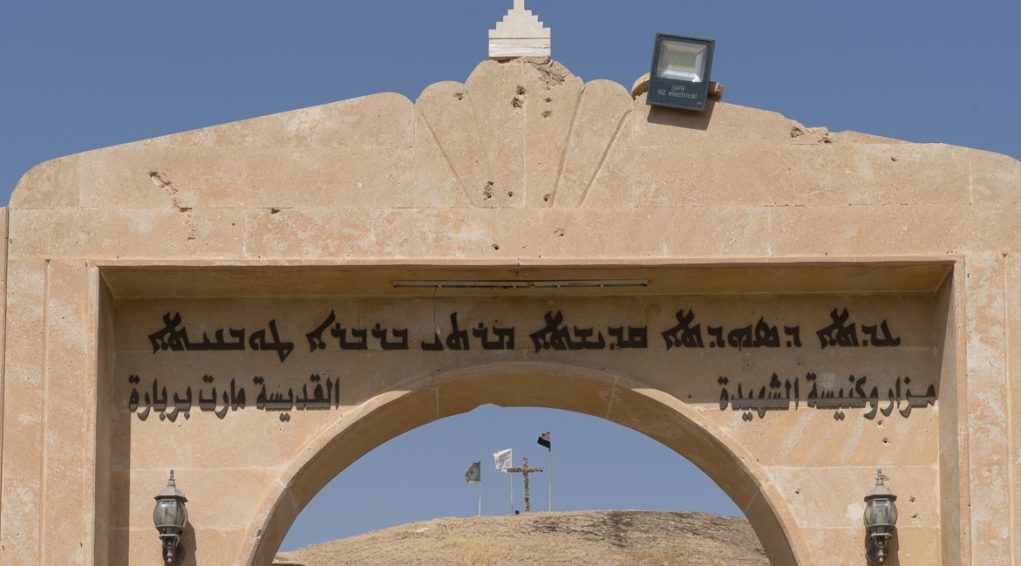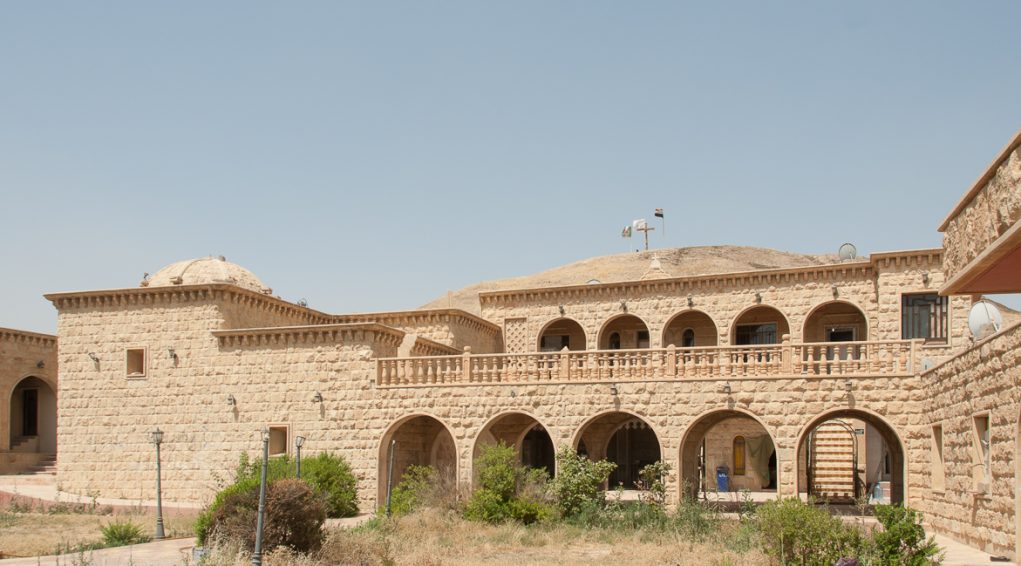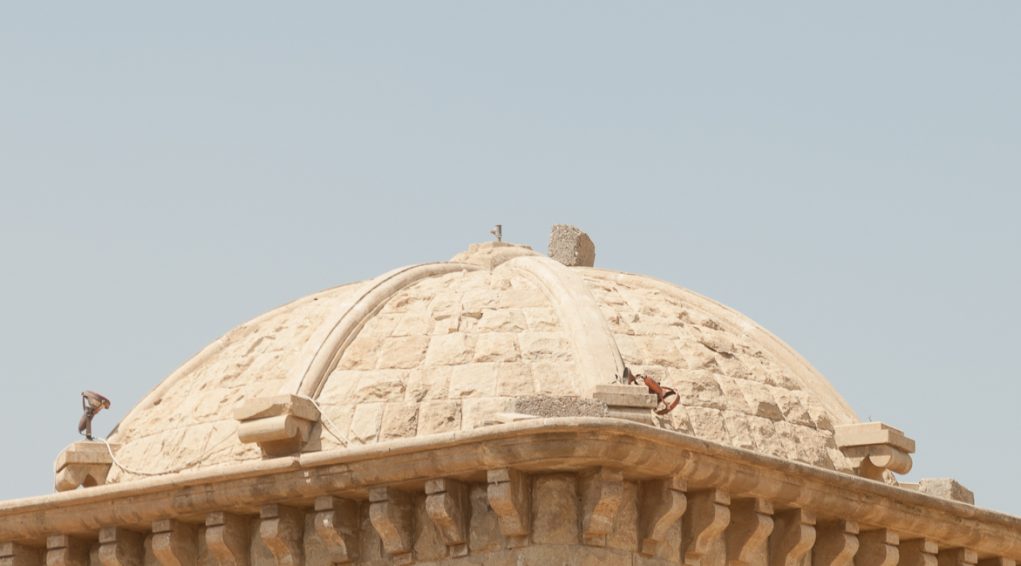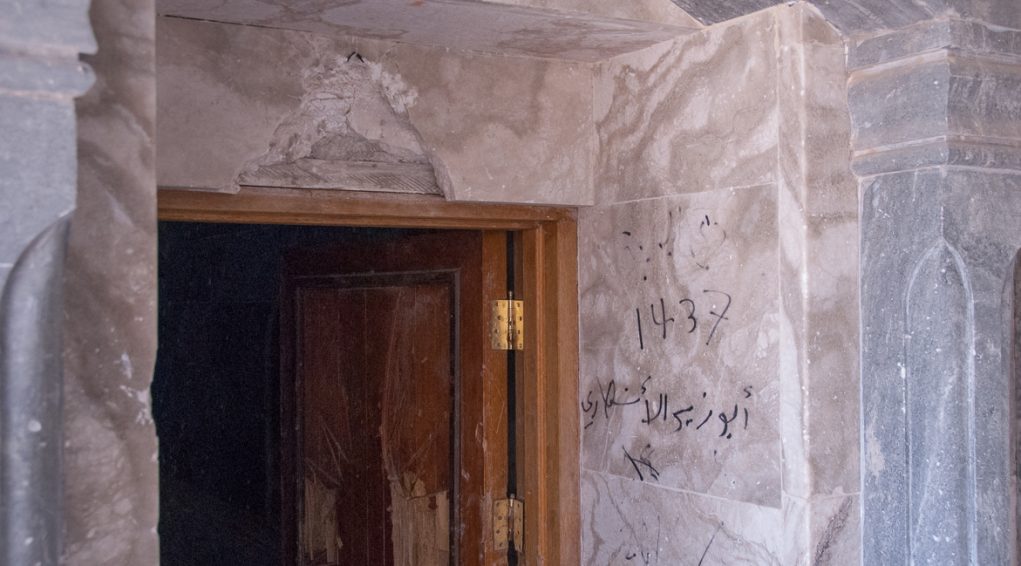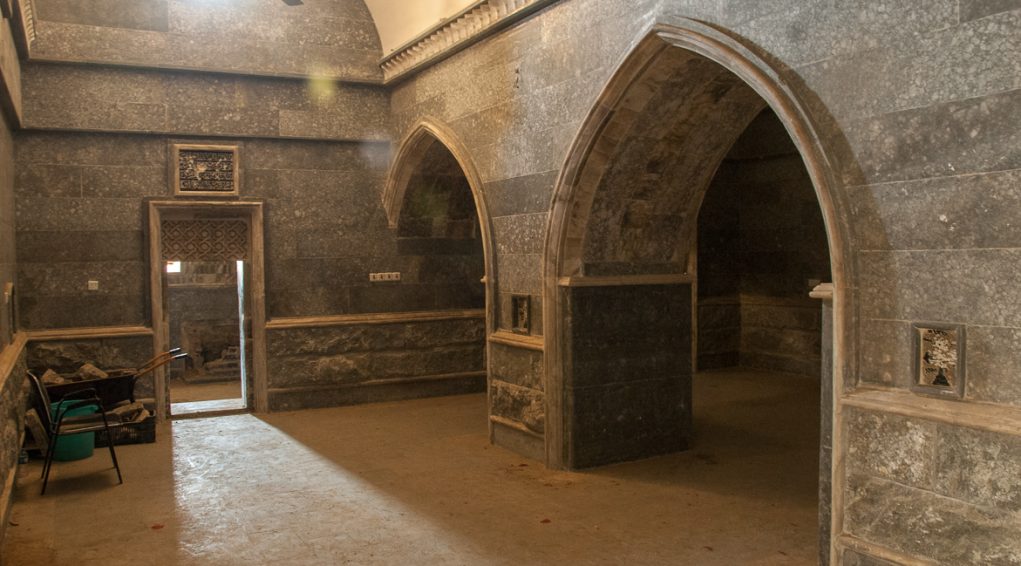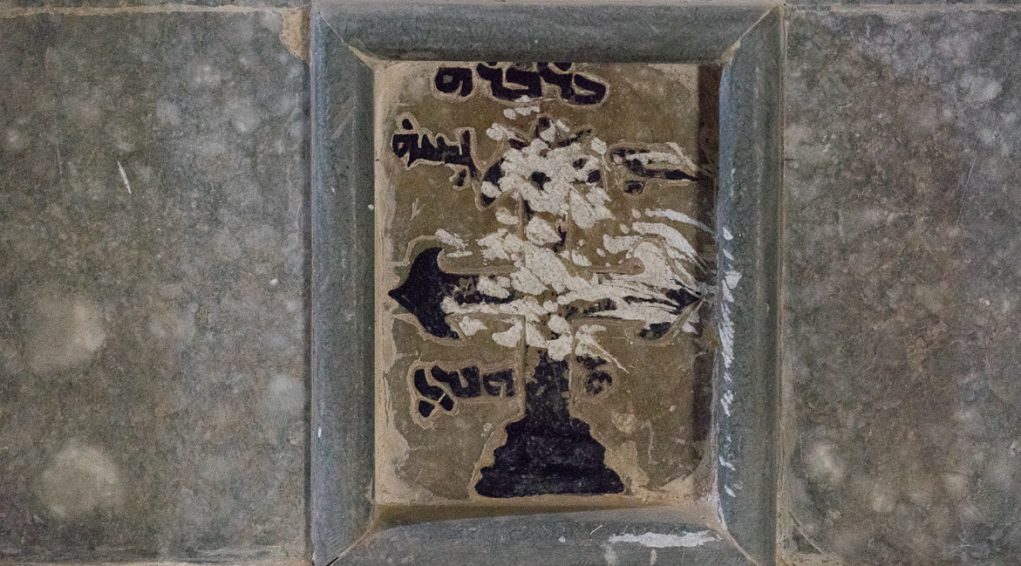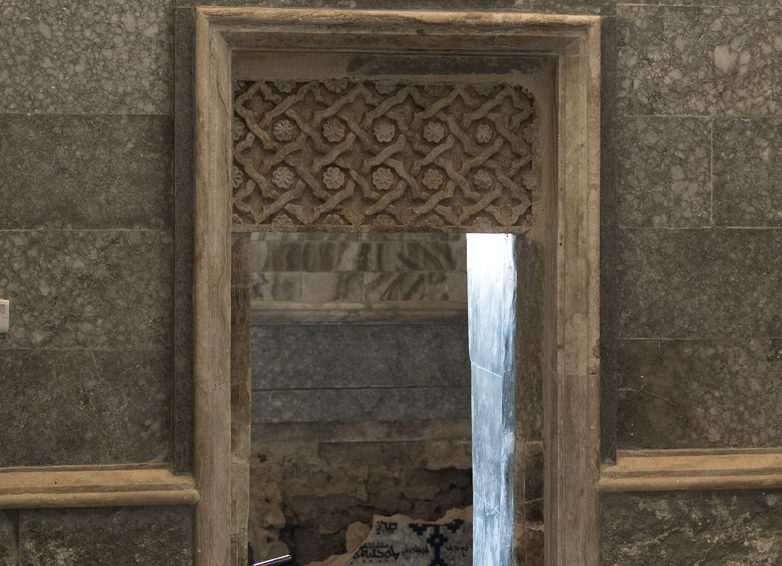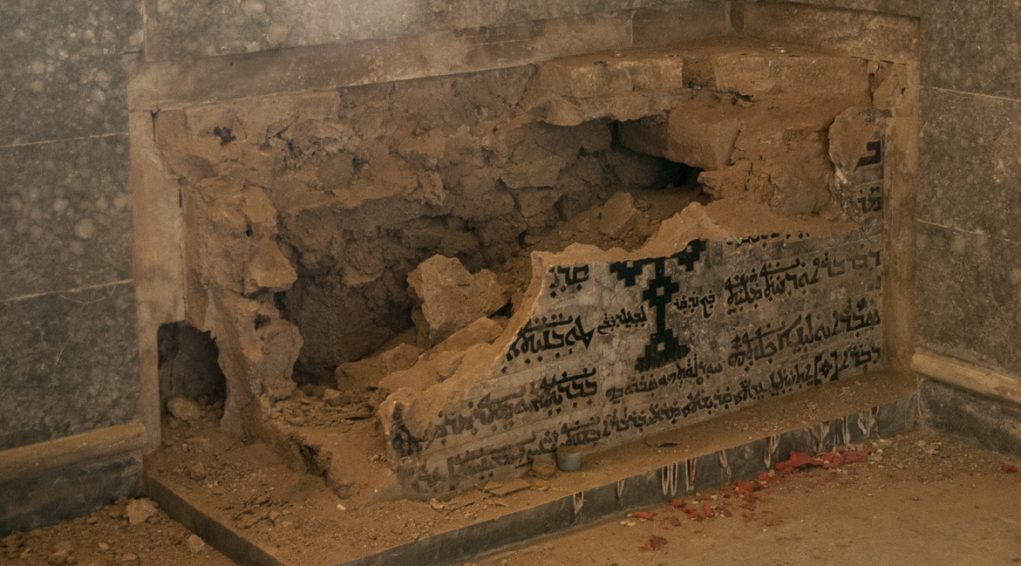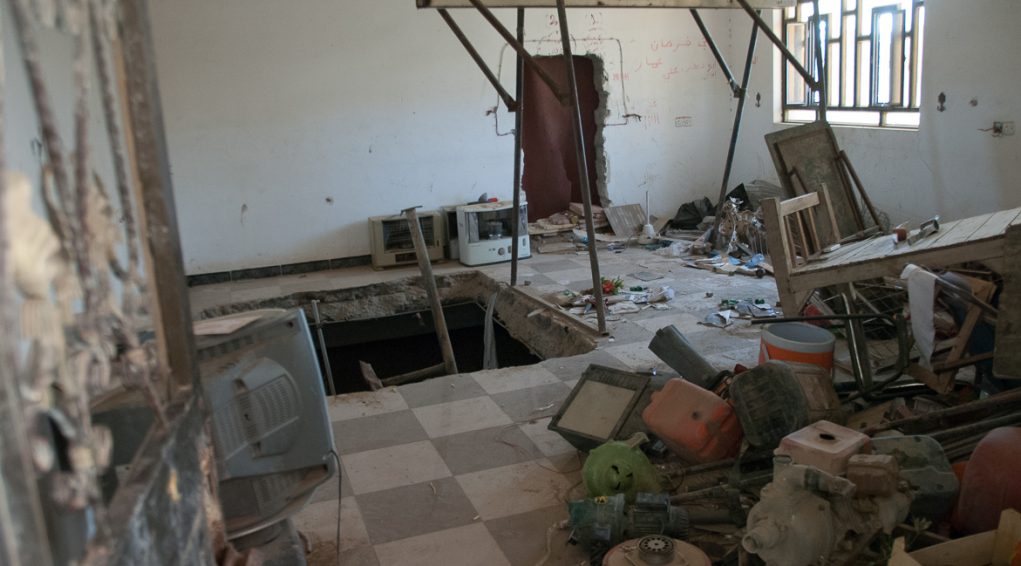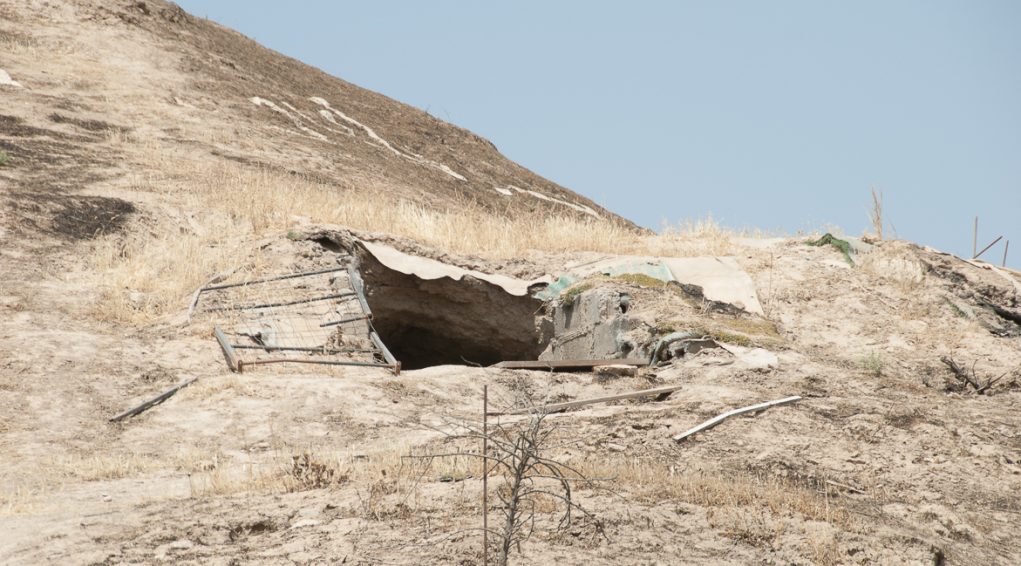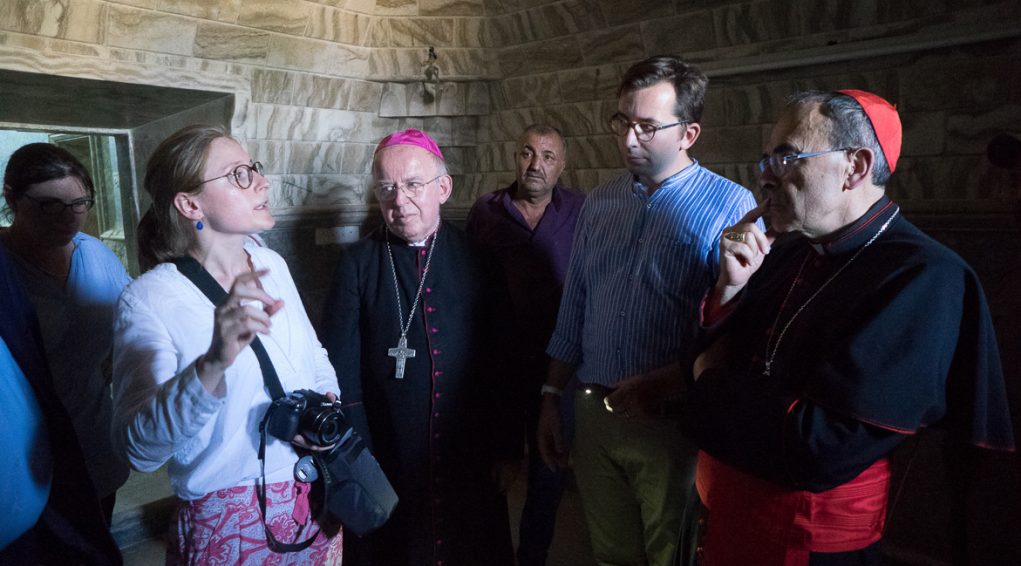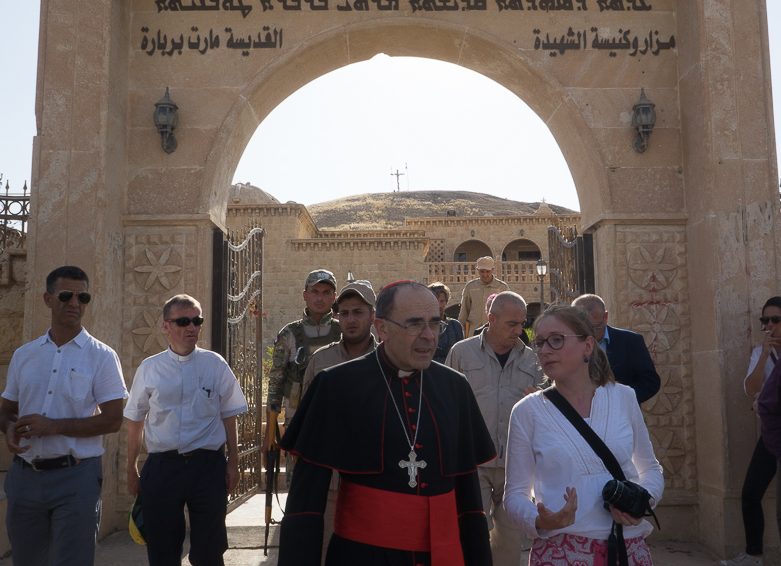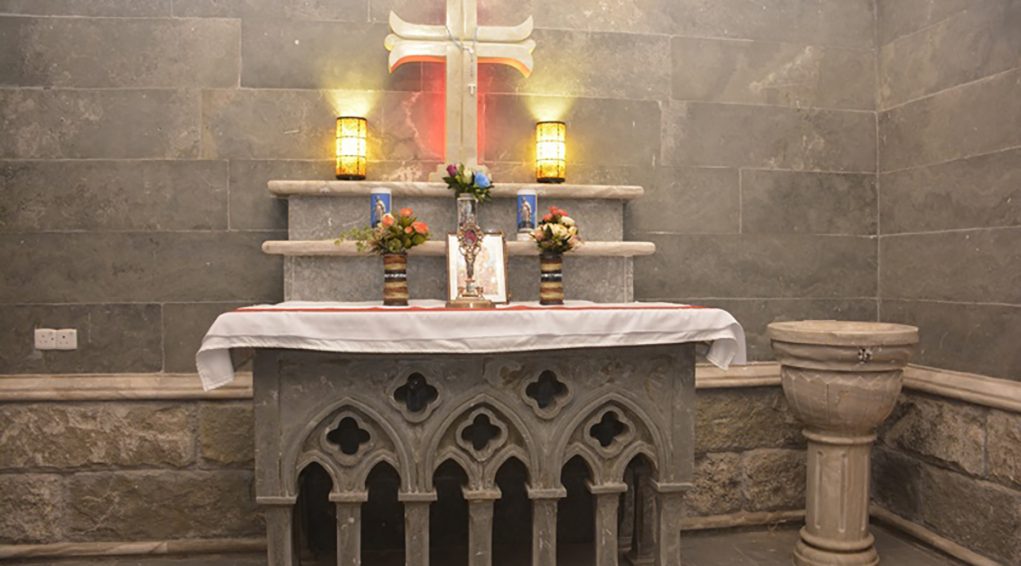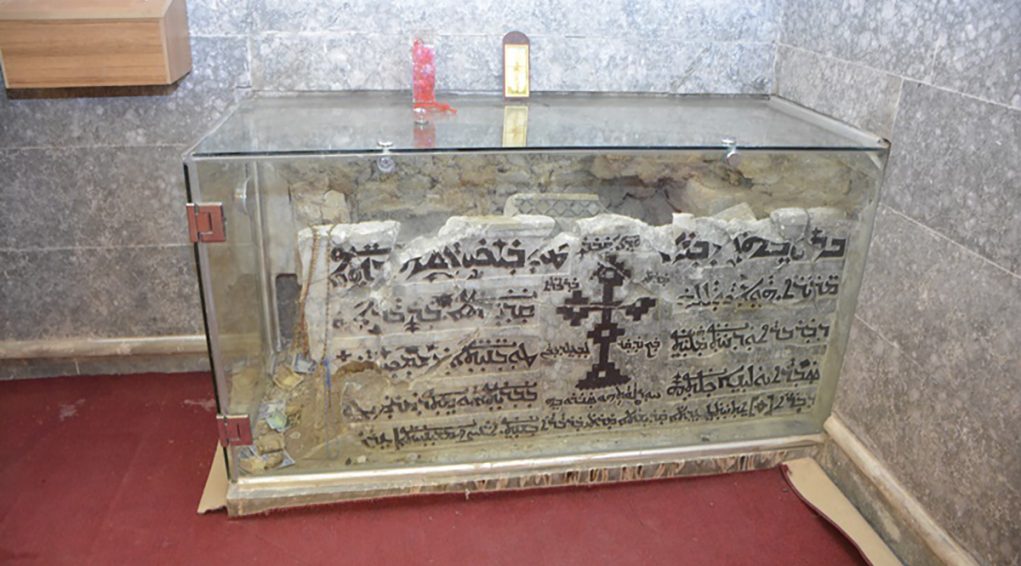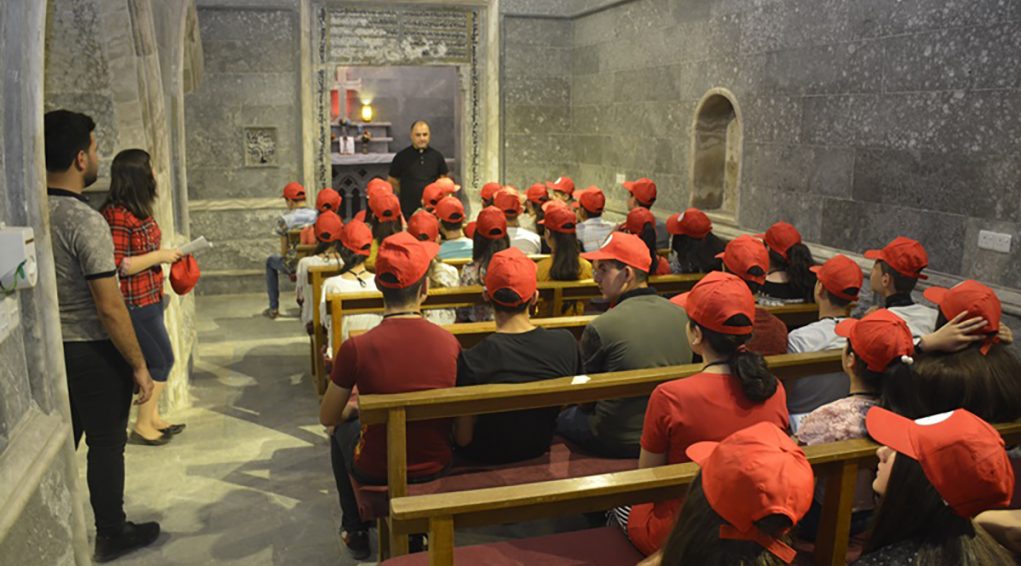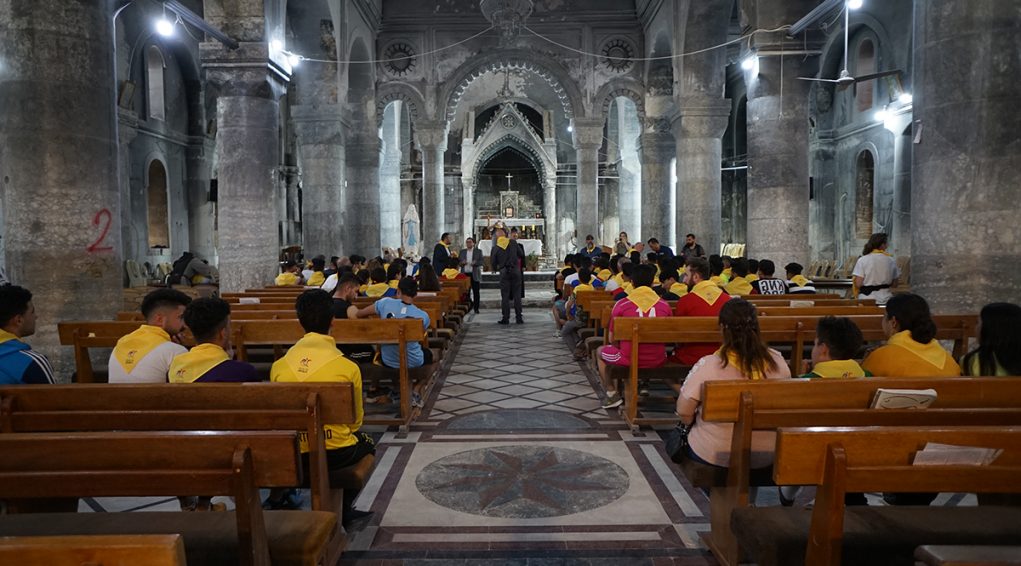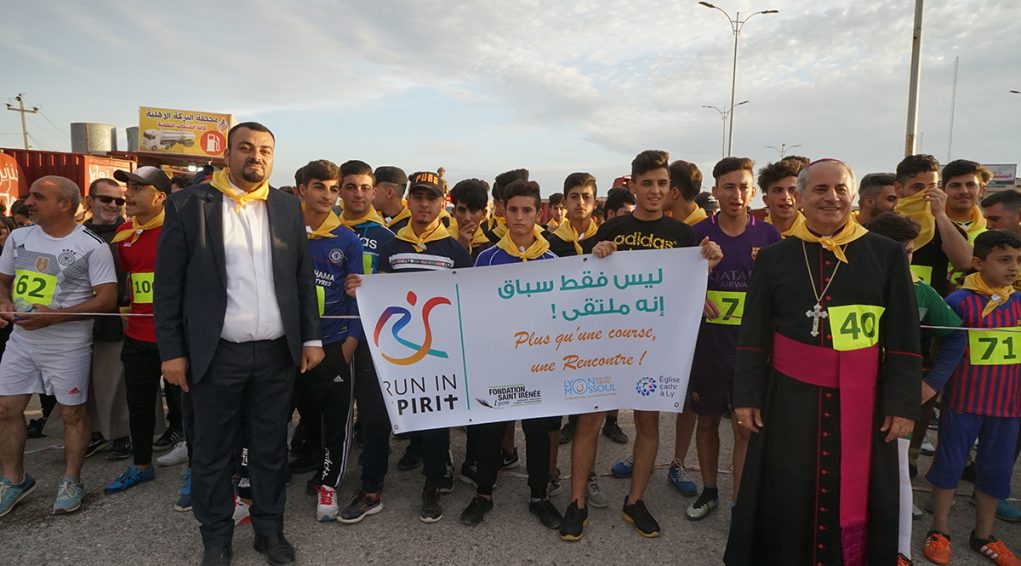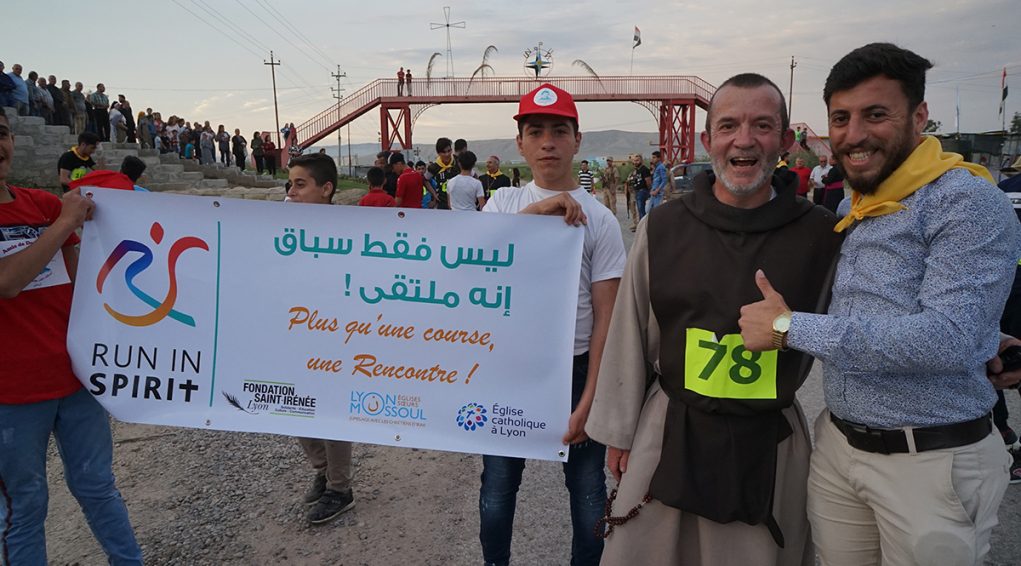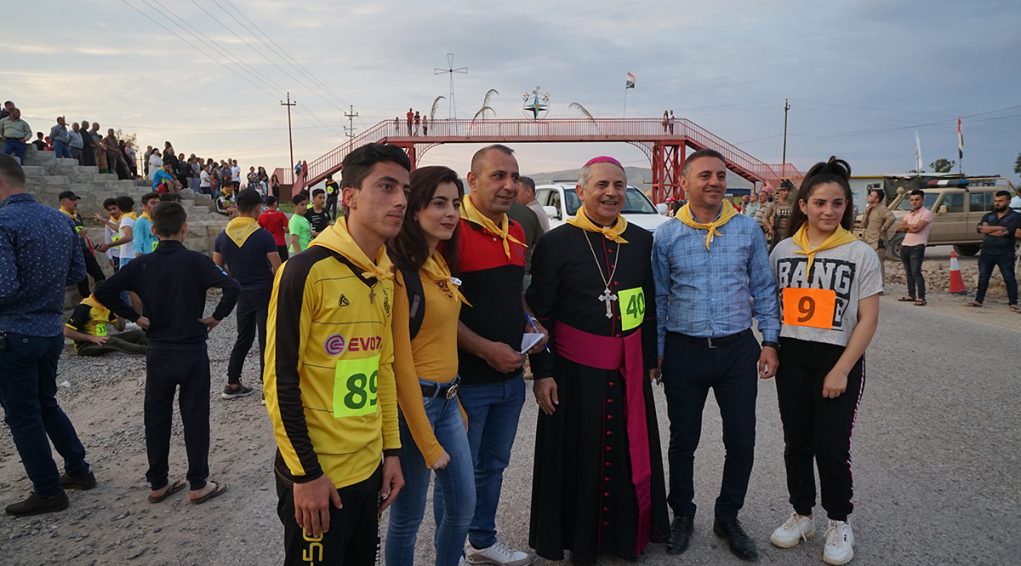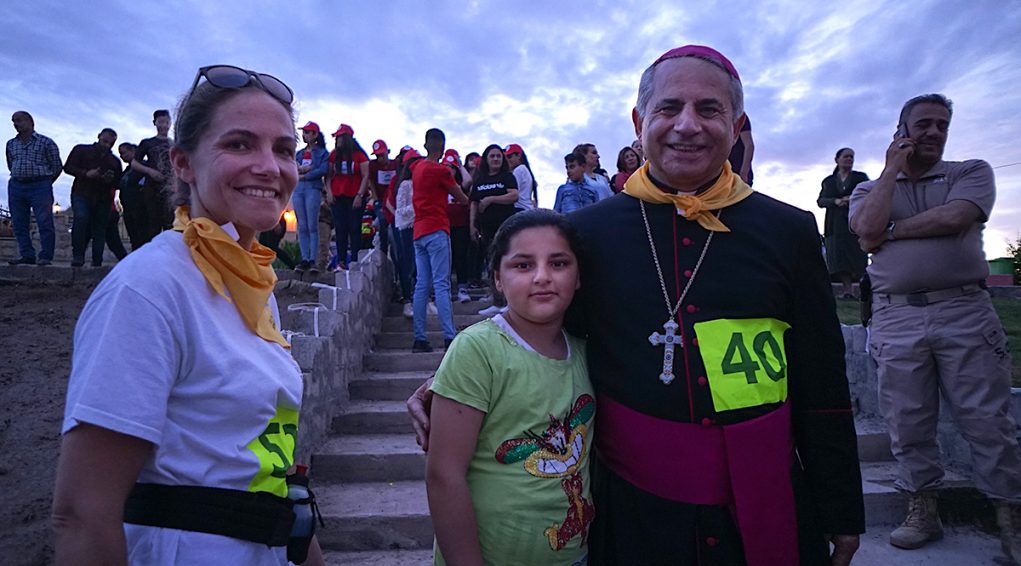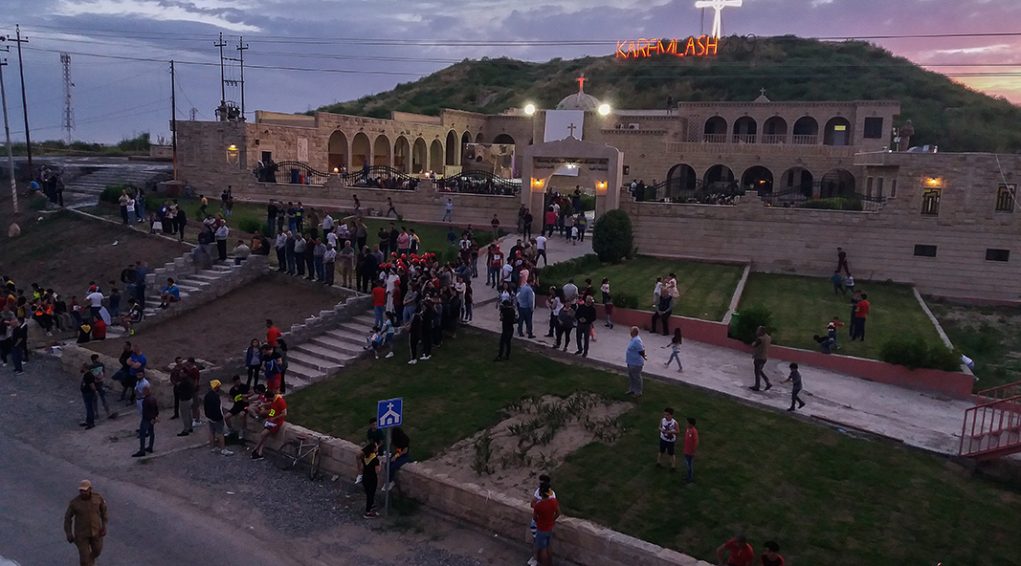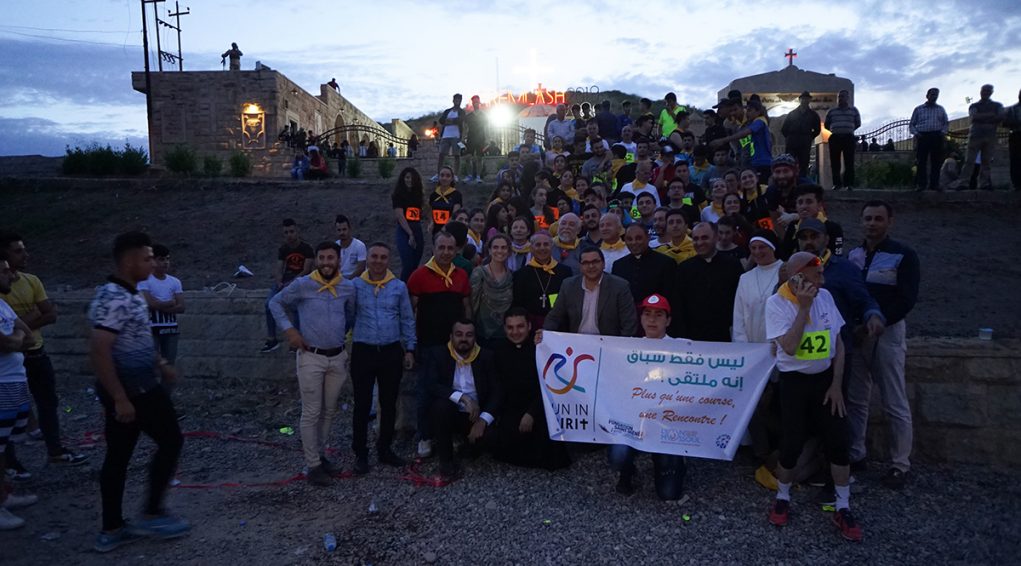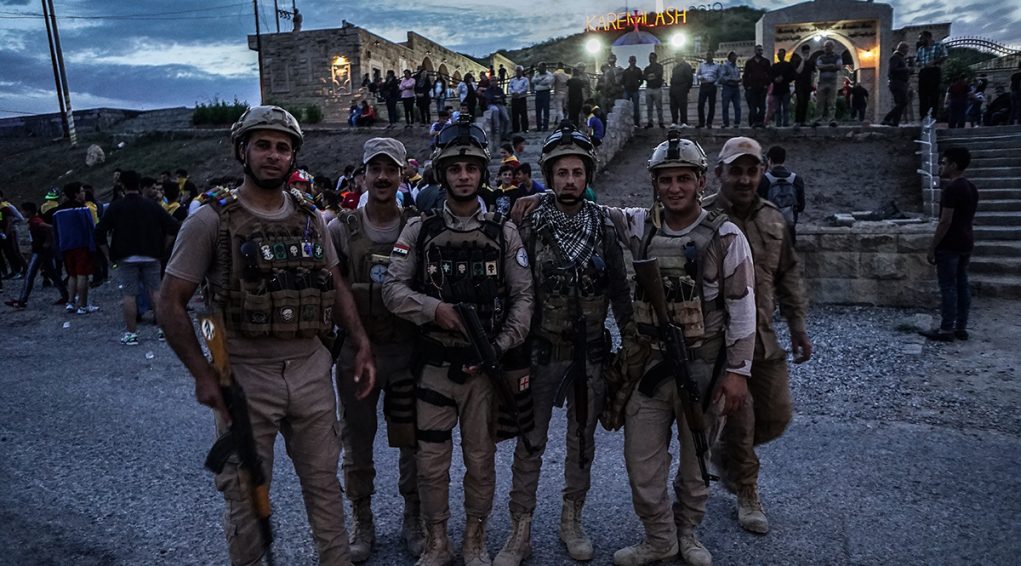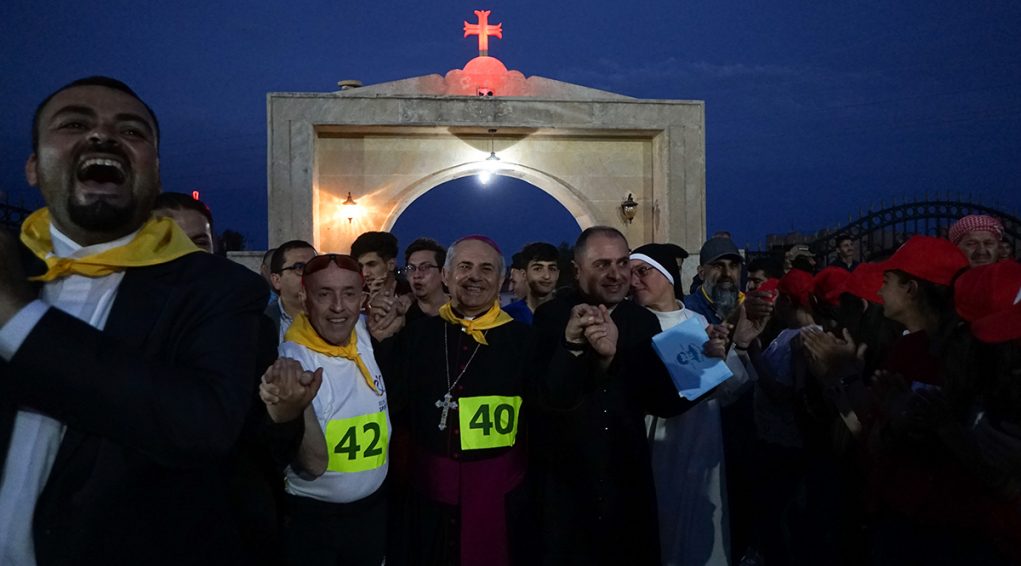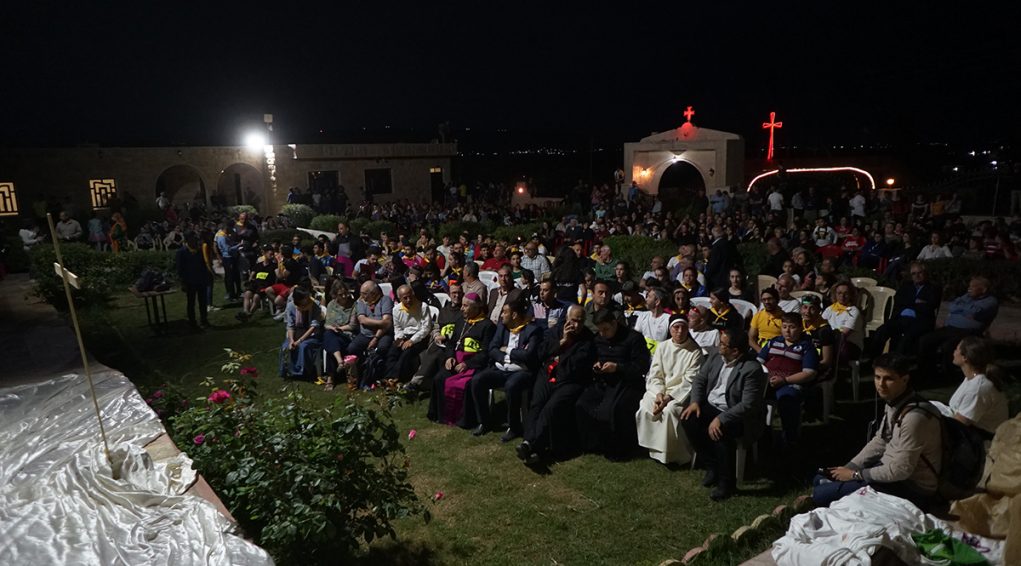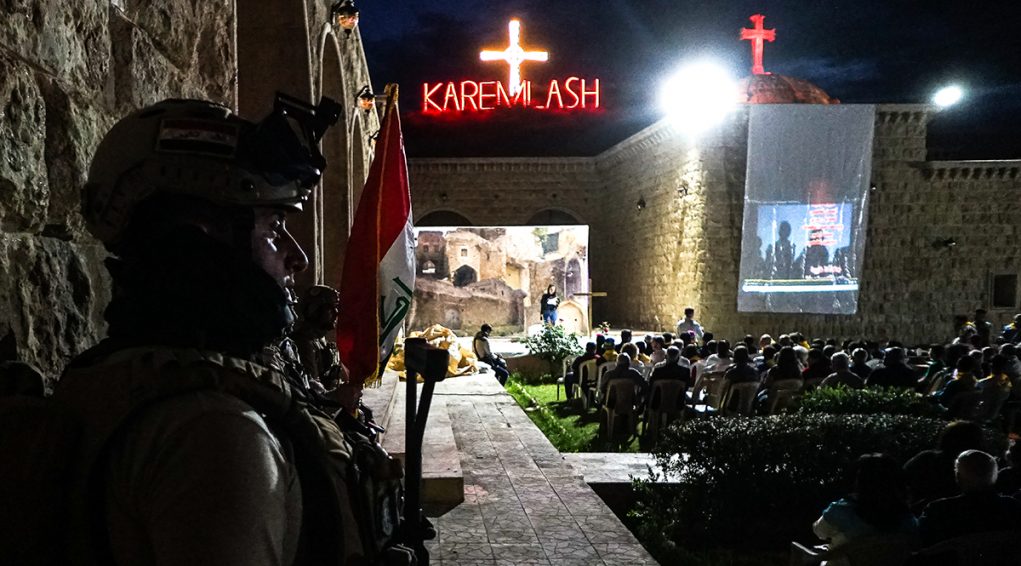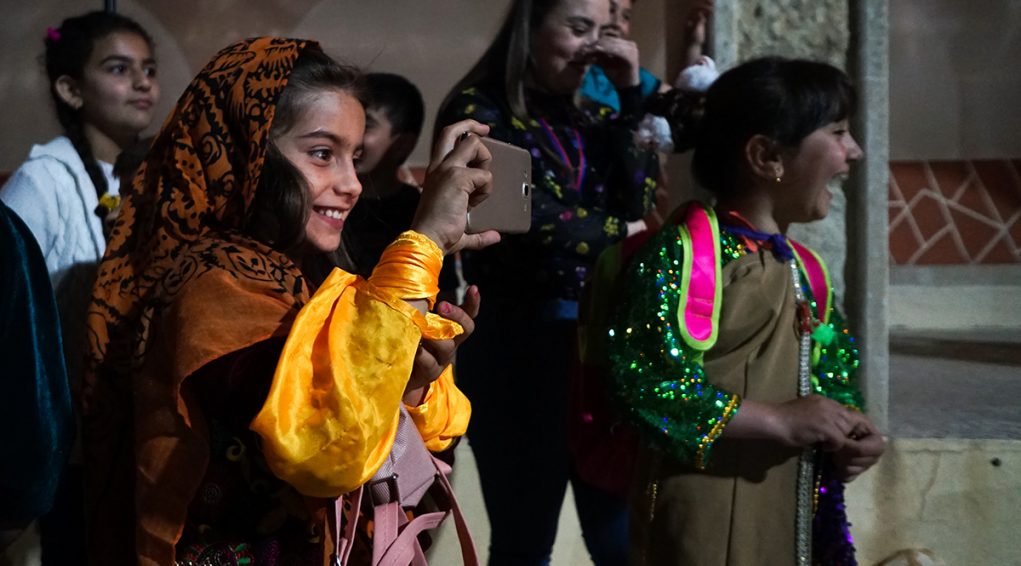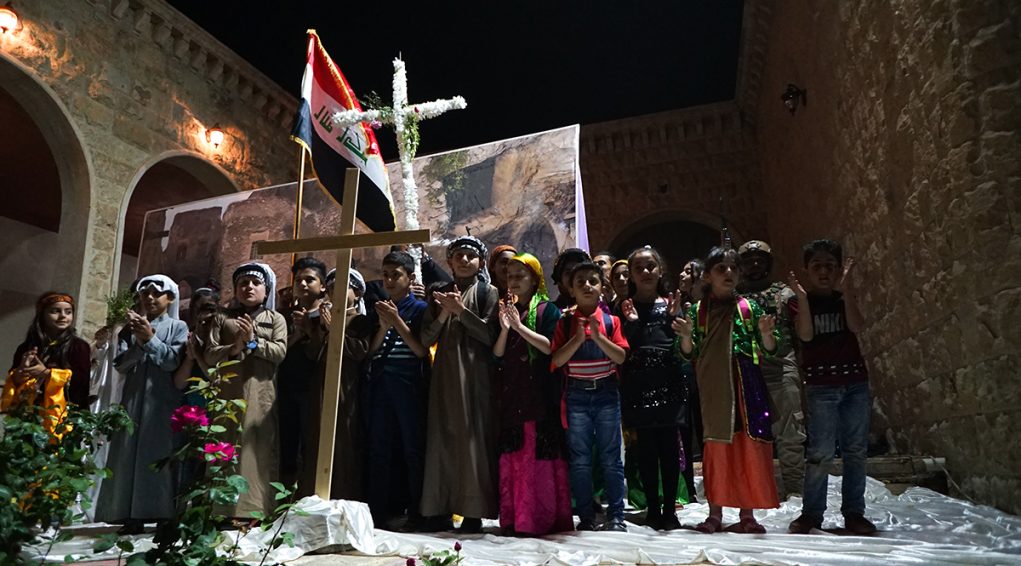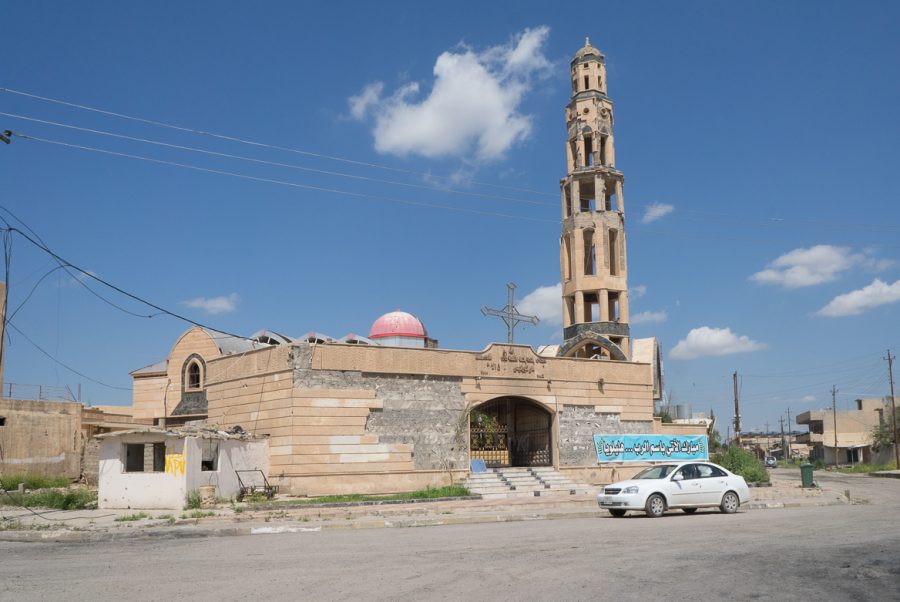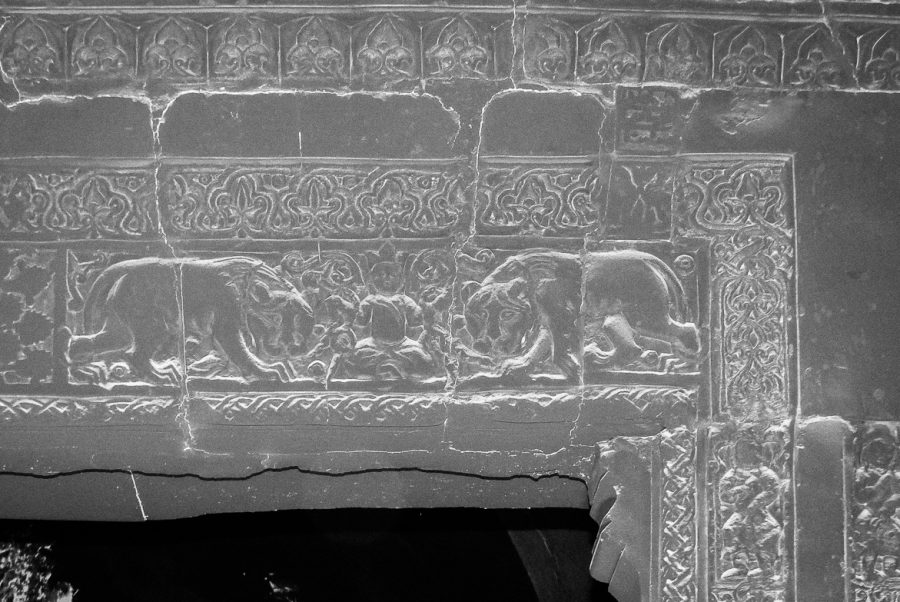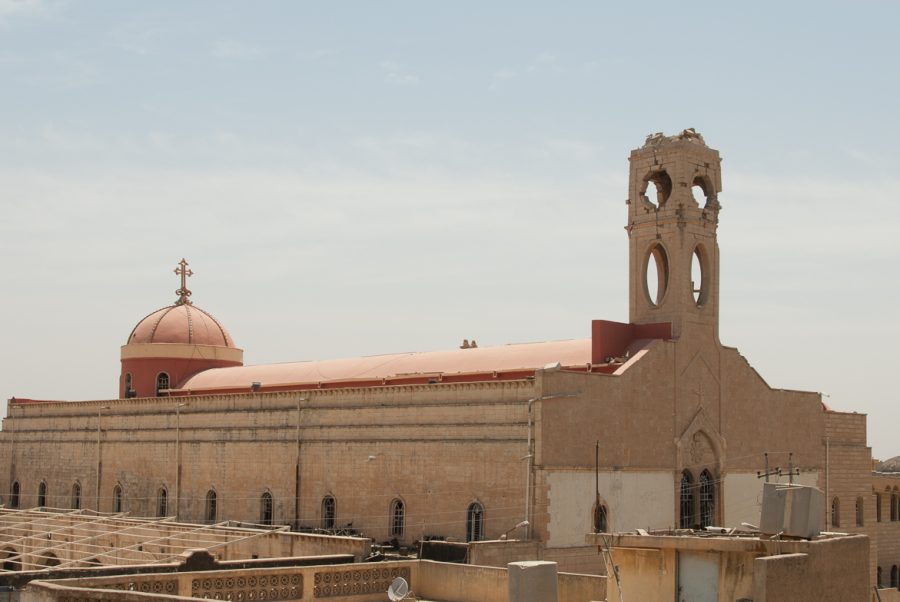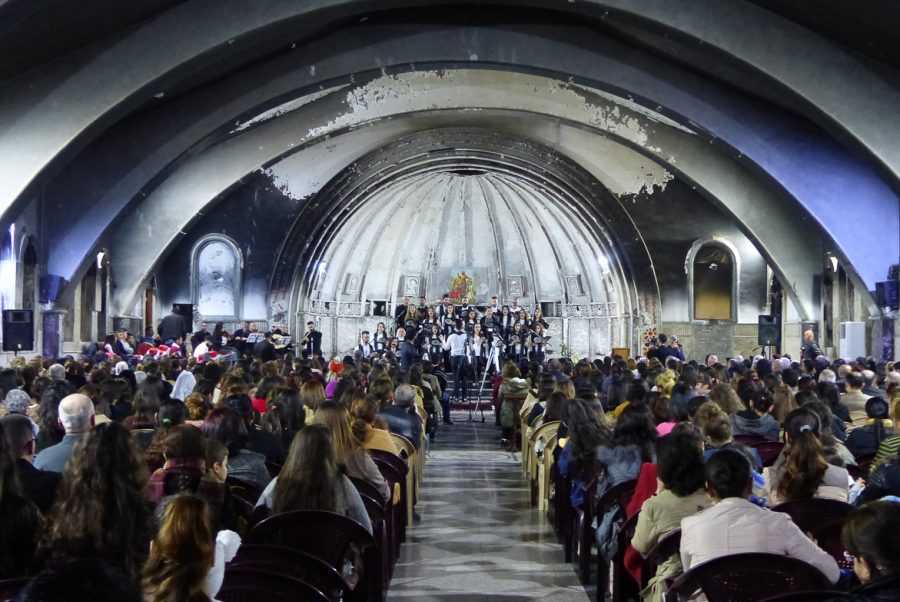Mart Barbara Monastery (Saint Barbara) in Karamles
Mart Barbara Monastery in Karamles (also known as Karemlash) sits 36°18’20.96″N 43°24’36.81″E and 293 meters high.
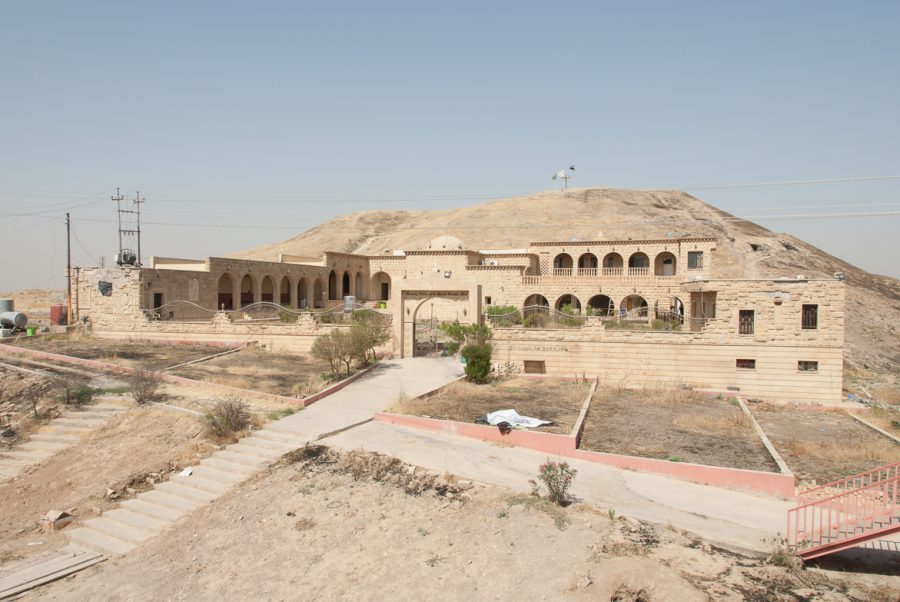
In the first half of the 14th century, the chronicler Ibn ‘Abd ul Haq mentioned that all inhabitants from Karamles were Christian. Famous in the whole Christian East, Saint Barbara was celebrated in many traditions. Saint Barbara from Karamles was supposedly the daughter of the town governor who converted to Christianity. Mart Barbara Monastery hosts the young martyr’s tomb. The tell on which it has been built could have been the place of the former governor’s palace and his martyr daughter’s.
Location
Mart Barbara Monastery lies 36°18’20.96″N 43°24’36.81″E and 293 meters high, at the door of Karamles, a well-known city for its large souk as related by several ancient authors. The monastery is built on the side of an archeological tell (artificial hill) and separated from the town by the road that goes from Baghdede (Qaraqosh), 5 km southwards, to Bartella, 10 km up north.
Toponymy
We can mention several sources to translate the village’s name. One of them would refer to the Aramaic words Karam lét, which would mean “ without vineyard” according to the 13th century traveller and encyclopaedist Yaqout al Roumi.
According to the orientalist Dominican Jean-Maurice Fiey, another explanation would be “the name Kar-méš comes from Assyria, it means the destroyed village (…) and appears in the Balawat gates’ bronze bands.” [1]
_______
[1] Assyrie Chrétienne, p.400, Jean-Maurice Fiey
Fragments of ancient History
Karamles is often identified as the site of the Battle of Gaugamela, where the armies of Alexander the Great and Darius III fought in 331 BC.
According to the geographer Vital Cuinet, “it is very probable that this battle took place north of Karamles, from this village up to the Khazir river (…) The plain is extremely flat, the Persian cavalry could spread out easily” [1]. Jean-Maurice Fiey challenges this geographic position and asserts that “a better study of the texts and furthermore the localisation of the bridge that has been used by the fighters to cross upon the Zab river, move the place of Alexander’s victory much further up north.” [2]
_______
[1] La Turquie d’Asie, Tome deuxième, Ernest Leroux éditeur, 1891, p.830
[2] Assyrie Chrétienne, p.401, Jean-Maurice Fiey
Fragment of a Christian History
Karamles seems to have embraced Christianity quite early. As from 562, people from Karamles “assisted in building the Monastery of the monk Bar’Éta, in whose life it is called the Grand Keramlash” [1].
The geographer Vital Cuinet mentions that in 1881 was found “in an old, large and well-built church in Karamles, a small wooden box, covered with iron plates and coated with bitumen, containing precious relics with Chaldean inscriptions which prove its authenticity and attributes them to Mar Addai and Mar Isho-Yab”[2].
Karamles, like other Christian cities from Mesopotamia, endured all kinds of attacks and destructions. Therein, Bar Hebraeus, a 13th-century Maphrian Syriac-Orthodox writer and learned scholar, relates that the Mongols besieged Karamles in 1235. “The inhabitants fled and found refuge in the church, but the Mongols surrounded it. Two noblemen took place at the two doors of the church. One of them spared and set free all those who went out through his door, the other one put to the sword all those, men, women, and children who came through his door.” [3] This event has been much reported in poems and songs that still remain today.
In the first half of the 14th century, the chronicler Ibn ‘Abd ul Haq stated that the people from Karamles were all Christian. In 1743 the Persian emperor Nader Shah attacked, plundered and ruined the village, as he had done in the whole area. Plague also affected Karamles more than once. As in 1828, for instance. This is being reported in a letter dated August 29th from Pierre-Alexandre Coupperie, Roman Catholic Bishop of Babylon and French Consul. This letter was quoted in the Dominican Missions journal in 1927[4], in which he wrote: “famine, civil war and plague wiped out at least half of the Christian population in Mosul and in Kurdistan”, which de facto included Karamles.
This plague was obviously not the first to affect the village as it had reached Mosul in 1737-38 and the very close Baghdede/Qaraqosh in 1773.
The Christian people from Karamles were originally members of the Church of the East (Persian Church) and progressively turned to the Catholic Chaldean Church. Mart Barbara in Karamles is by the way much well known for being the first Chaldean church in Iraq.
At his time, Jean-Maurice Fiey drew up a list of 2100 inhabitants there, mostly Chaldeans, as well as a Syriac-Orthodox minority of 35 families. He also reported an Apostolic-Armenian presence.
One of the first European chroniclers who talked about Mart Barbara Monastery was the British doctor and explorer Edward Ives, from Titchfield, Hampshire[5].
On July 2nd 1758, he arrived in Karamles, and reported the inhabitants’ stories about Persian looters who destroyed the monastery’s walls, searching for gold[6]. Edward Ives bought there a lectionary, which is now stored at the British Museum. [7] Seven years later, the Dominican priest, Father Domenico Lanza, went to the Monastery in 1765 to celebrate Mass.
________
[1] id.
[2] La Turquie d’Asie, Tome deuxième, Ernest Leroux éditeur, 1891, p.830
[3] Assyrie Chrétienne, p.402, Jean-Maurice Fiey
[4] Missions Dominicaines, p.36 s.
[5] « A Voyage from England to India, in the Year MDCCLIV: Also, a Journey from Persia to England, by an unusual route ».
[6] Assyrie Chrétienne. JM Fiey, p.405
[7] Id.
Hagiographical fragments
Famous throughout all the Christian East, Saint Barbara is celebrated in several traditions. According to one tradition, she was supposedly born in 210 and died as a martyr at the age of 25 in 235 in Nicomedia (modern Izmit, Turkey). According to some investigations made in the cemetery in the northern part of the city, where she is supposed to have been kept as a prisoner, two supposed legs of the Saint’s body have been found there.
According to another legend, she is said to be an Egyptian girl, who has been martyrized in Heliopolis. Saint Barbara from Karamles is also said to have been the governor’s daughter who converted secretly to Christianity with her maid Yuliana. Both died as martyrs. Saint Barbara’s father, unable to convince his daughter to abandon Christianity, would have beheaded her himself, after she was dreadfully tortured. But when he pulled out his sword, it broke into pieces…
Description of the Monastery
Mart Barbara hosts the tomb of the young martyr. The hill on which it has been built could have been the site of the former palace of the governor and her martyrized daughter.
Mart Barbara’s tomb was destroyed by Nader Shah, who also stole the gold he found there. Those destructions could explain why the epigraphic vestiges are so poor. Saint Barbara’s tomb has been rebuilt in 1766, and the church in 1797, that is to say 54 years after the Persian’s plundering. The marble tomb may have been that of Yuliana, her maid and sister in faith.
This monastery and Saint Barbara’s martyrion have been restored in 1997 and again in 2009, before ISIS invaded the whole region in 2014 and turned the place into a military base.
In two rooms of the monastery, the Islamist fighters dug and arranged two large tunnels to give access to a wide network of underground galleries.
Through one of the entries, it was possible to go and live under the hill without being seen; the other entry gave access to a tunnel which led up to Karamles village and no movements were to be noticed by air forces. The excavated earth has been carried away into the monastery’s church. Both naves, the shrine and the martyr’s tomb were totally burried under tons of rubble. The outer and inner facades were tagged with insults in Arabic. All crosses have been methodically hammered, as well as epigraphic inscriptions, like those engraved on the saint’s marble tomb.
In November 2016, after the defeat of ISIS, a team of French and Iraqi volunteers[1] came to clean up the monastery and carry away tons of rubble piled up in the Mart Barbara church. While doing this and without archaeological care, they dig out some human bones from the rubble and this will probably make the beginning of a new story, that the legend of Saint Barbara, for lack of scientific evidence, will surely develop…
On July 25th 2017, a delegation of French bishops led by Cardinal Barbarin, archbishop of Lyon, came here to visit the monastery and Saint Barbara’s tomb, as a testimony of faith and brotherhood with the Christian people from Karamles who are, little by little, coming back.
_______
[1] SOS Chrétiens d’Orient
News about Mart Barbara Monastery
- Restoration: Restoration work was carried out at the Convent of Saint Barbe. The tomb of the Saint was glazed. The altar was rehabilitated.The convent garden has been refurbished. The convent is now open 24/7 to pray and meditate.
- Run In Spirit: On May 9, 2019, a 5 km foot race between Bakhdida (Qaraqosh) and Karamlesse was organized by the association «Lyon Mosoul» of the diocese of Lyon (engaged since 2014 in a twinning with the diocese of Mosul, for the benefit of populations displaced by the war).
This event brought together a hundred young people. It was an extraordinary moment of brotherhood with Iraqi youth between Qaraqosh and Karamlesse. Encounter, joy and smile!» (source: Facebook Lyonmosoul). A festive evening and memorial took place in the garden of the convent in the presence of more than 300 people: the young runners, their families, as well as the inhabitants of the cities of Karamlesse and Bakhdida (Qaraqosh).
Monument's gallery
Monuments
Nearby
Help us preserve the monuments' memory
Family pictures, videos, records, share your documents to make the site live!
I contribute
